Quick filters:
Lacandon people chiapas Stock Photos and Images
 Mexican indigenous Lacandon Mayan girl in traditional white dress, Chiapas rainforest, Mexico. Stock Photohttps://www.alamy.com/image-license-details/?v=1https://www.alamy.com/mexican-indigenous-lacandon-mayan-girl-in-traditional-white-dress-chiapas-rainforest-mexico-image554755015.html
Mexican indigenous Lacandon Mayan girl in traditional white dress, Chiapas rainforest, Mexico. Stock Photohttps://www.alamy.com/image-license-details/?v=1https://www.alamy.com/mexican-indigenous-lacandon-mayan-girl-in-traditional-white-dress-chiapas-rainforest-mexico-image554755015.htmlRM2R6F7K3–Mexican indigenous Lacandon Mayan girl in traditional white dress, Chiapas rainforest, Mexico.
 Mexico, Chiapas state, Lacanja Chansayab, a Lacandon boy playing Stock Photohttps://www.alamy.com/image-license-details/?v=1https://www.alamy.com/mexico-chiapas-state-lacanja-chansayab-a-lacandon-boy-playing-image266924724.html
Mexico, Chiapas state, Lacanja Chansayab, a Lacandon boy playing Stock Photohttps://www.alamy.com/image-license-details/?v=1https://www.alamy.com/mexico-chiapas-state-lacanja-chansayab-a-lacandon-boy-playing-image266924724.htmlRMWE7D5T–Mexico, Chiapas state, Lacanja Chansayab, a Lacandon boy playing
 Lacandon men, descendants of the Mayan civilization, in a boat in the Jungle of Chiapas, Mexico Stock Photohttps://www.alamy.com/image-license-details/?v=1https://www.alamy.com/stock-photo-lacandon-men-descendants-of-the-mayan-civilization-in-a-boat-in-the-38340180.html
Lacandon men, descendants of the Mayan civilization, in a boat in the Jungle of Chiapas, Mexico Stock Photohttps://www.alamy.com/image-license-details/?v=1https://www.alamy.com/stock-photo-lacandon-men-descendants-of-the-mayan-civilization-in-a-boat-in-the-38340180.htmlRMC6AF84–Lacandon men, descendants of the Mayan civilization, in a boat in the Jungle of Chiapas, Mexico
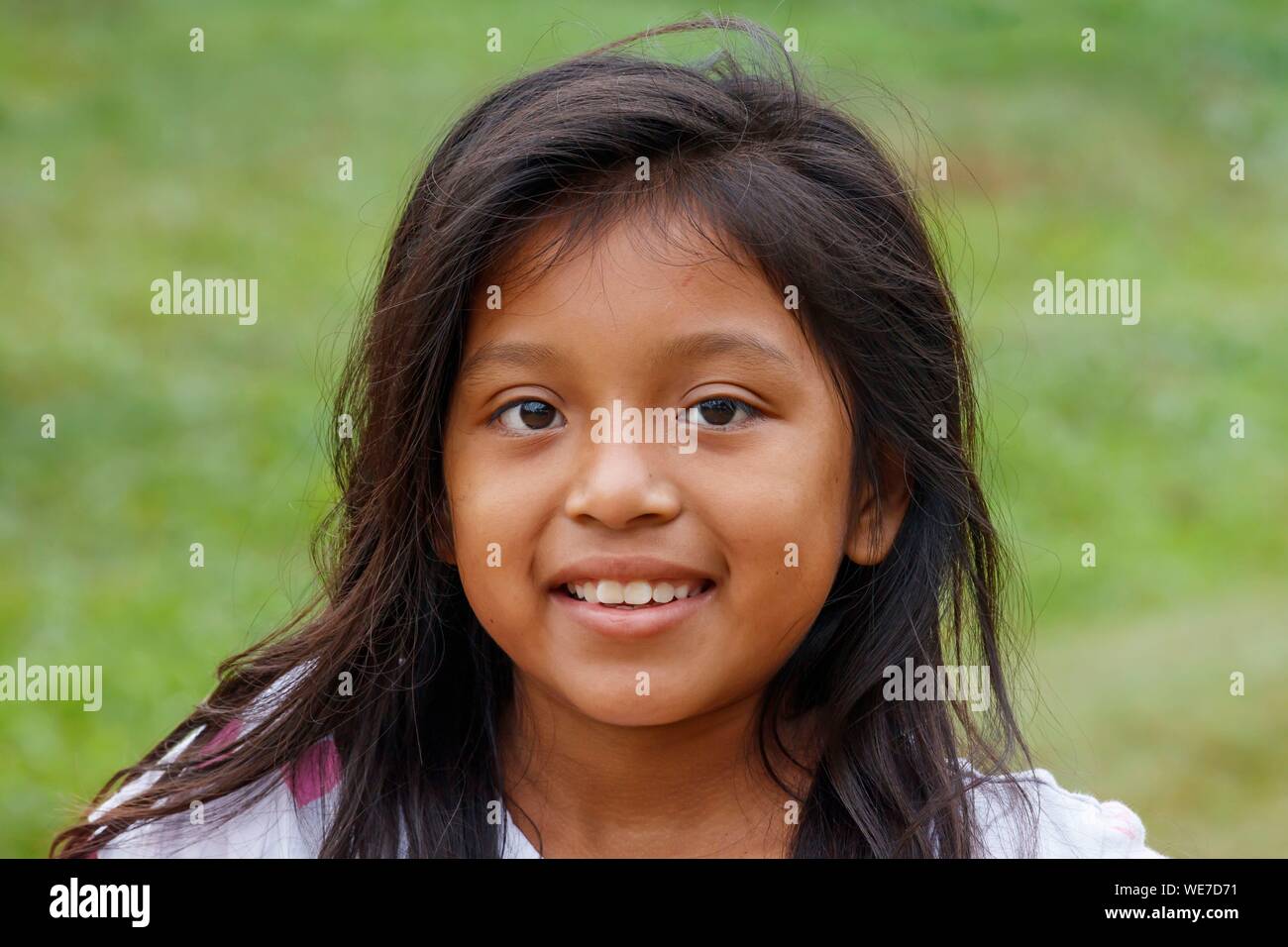 Mexico, Chiapas state, Las Guacamayas, a little Lacandon girl portrait Stock Photohttps://www.alamy.com/image-license-details/?v=1https://www.alamy.com/mexico-chiapas-state-las-guacamayas-a-little-lacandon-girl-portrait-image266924757.html
Mexico, Chiapas state, Las Guacamayas, a little Lacandon girl portrait Stock Photohttps://www.alamy.com/image-license-details/?v=1https://www.alamy.com/mexico-chiapas-state-las-guacamayas-a-little-lacandon-girl-portrait-image266924757.htmlRMWE7D71–Mexico, Chiapas state, Las Guacamayas, a little Lacandon girl portrait
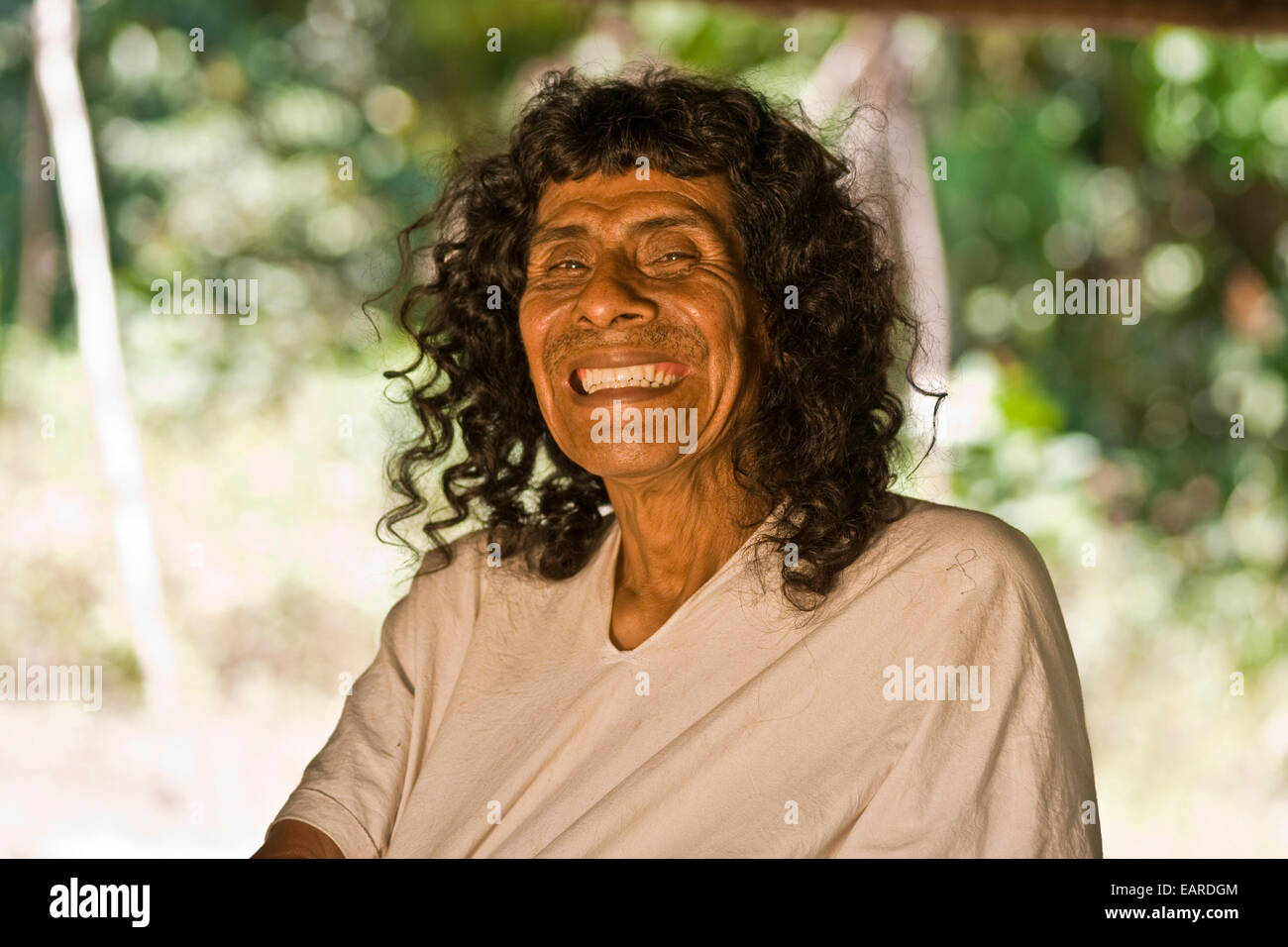 Shaman of the Lacandon tribe, Selva Lacandona, Nahá, Chiapas, Mexico Stock Photohttps://www.alamy.com/image-license-details/?v=1https://www.alamy.com/stock-photo-shaman-of-the-lacandon-tribe-selva-lacandona-nah-chiapas-mexico-75503588.html
Shaman of the Lacandon tribe, Selva Lacandona, Nahá, Chiapas, Mexico Stock Photohttps://www.alamy.com/image-license-details/?v=1https://www.alamy.com/stock-photo-shaman-of-the-lacandon-tribe-selva-lacandona-nah-chiapas-mexico-75503588.htmlRMEARDGM–Shaman of the Lacandon tribe, Selva Lacandona, Nahá, Chiapas, Mexico
 Young men stand below a waterfall near the Lacandon Maya community of Naha, Chiapas, Mexico. Stock Photohttps://www.alamy.com/image-license-details/?v=1https://www.alamy.com/stock-photo-young-men-stand-below-a-waterfall-near-the-lacandon-maya-community-23160084.html
Young men stand below a waterfall near the Lacandon Maya community of Naha, Chiapas, Mexico. Stock Photohttps://www.alamy.com/image-license-details/?v=1https://www.alamy.com/stock-photo-young-men-stand-below-a-waterfall-near-the-lacandon-maya-community-23160084.htmlRFB9K0WT–Young men stand below a waterfall near the Lacandon Maya community of Naha, Chiapas, Mexico.
 Mexico, Chiapas state, Lacanja Chansayab, a Lacandon girl, photographic composition series 'voyage Dreams' representing people surrounded by typical e Stock Photohttps://www.alamy.com/image-license-details/?v=1https://www.alamy.com/mexico-chiapas-state-lacanja-chansayab-a-lacandon-girl-photographic-composition-series-voyage-dreams-representing-people-surrounded-by-typical-e-image379383203.html
Mexico, Chiapas state, Lacanja Chansayab, a Lacandon girl, photographic composition series 'voyage Dreams' representing people surrounded by typical e Stock Photohttps://www.alamy.com/image-license-details/?v=1https://www.alamy.com/mexico-chiapas-state-lacanja-chansayab-a-lacandon-girl-photographic-composition-series-voyage-dreams-representing-people-surrounded-by-typical-e-image379383203.htmlRM2D16B43–Mexico, Chiapas state, Lacanja Chansayab, a Lacandon girl, photographic composition series 'voyage Dreams' representing people surrounded by typical e
 Lacandon woman baking tortilla in her hut in Naha in the Lacandon jungle in Chiapas, Mexico, Chiapas, Lacandonen-Urwald, Naha Stock Photohttps://www.alamy.com/image-license-details/?v=1https://www.alamy.com/stock-photo-lacandon-woman-baking-tortilla-in-her-hut-in-naha-in-the-lacandon-21794188.html
Lacandon woman baking tortilla in her hut in Naha in the Lacandon jungle in Chiapas, Mexico, Chiapas, Lacandonen-Urwald, Naha Stock Photohttps://www.alamy.com/image-license-details/?v=1https://www.alamy.com/stock-photo-lacandon-woman-baking-tortilla-in-her-hut-in-naha-in-the-lacandon-21794188.htmlRMB7CPKT–Lacandon woman baking tortilla in her hut in Naha in the Lacandon jungle in Chiapas, Mexico, Chiapas, Lacandonen-Urwald, Naha
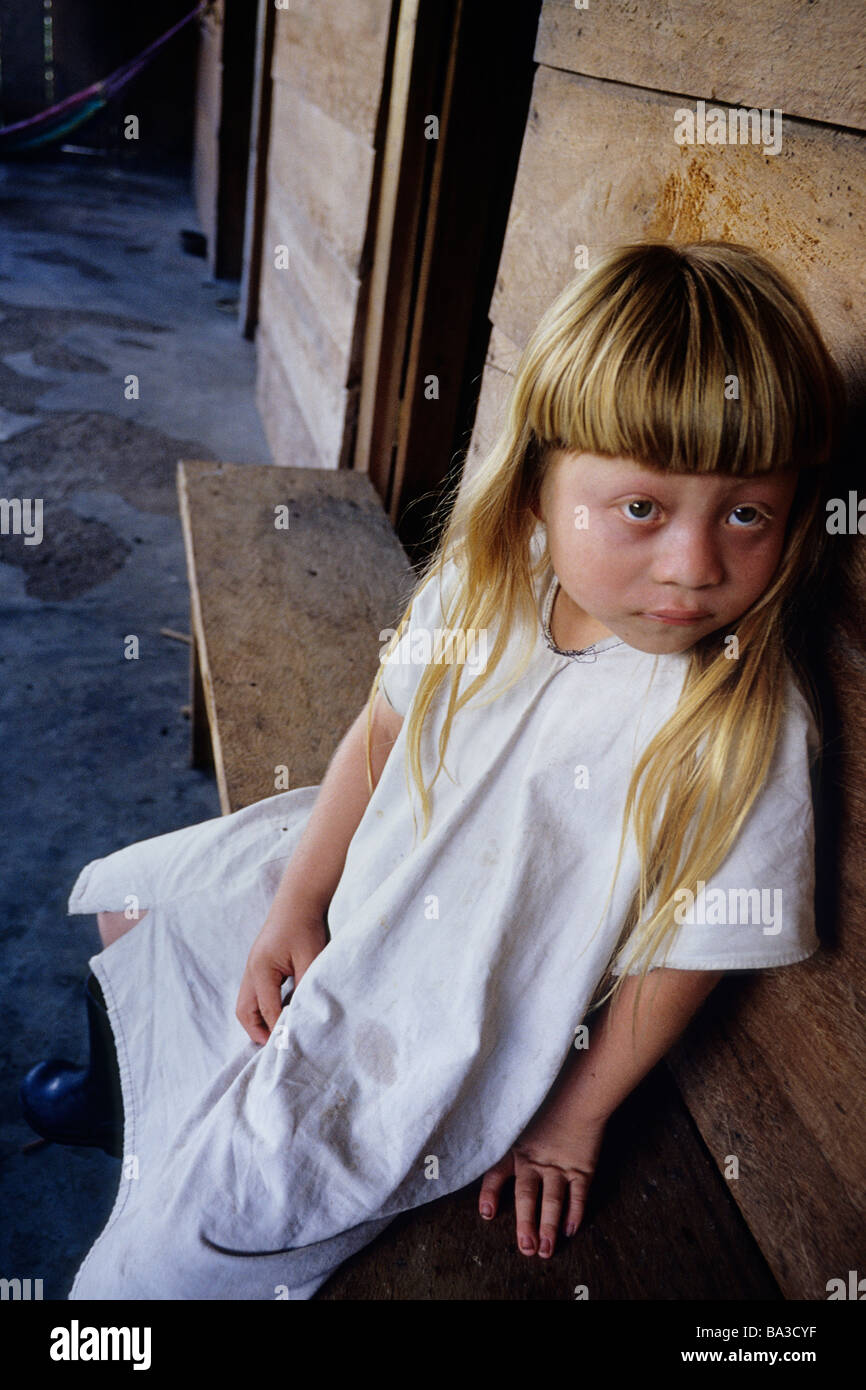 Albino Lacandon Indian (Hach Winik) boy Chan Bor sitting at the doorway to his house in the village of Nahá, Mexico. Stock Photohttps://www.alamy.com/image-license-details/?v=1https://www.alamy.com/stock-photo-albino-lacandon-indian-hach-winik-boy-chan-bor-sitting-at-the-doorway-23432963.html
Albino Lacandon Indian (Hach Winik) boy Chan Bor sitting at the doorway to his house in the village of Nahá, Mexico. Stock Photohttps://www.alamy.com/image-license-details/?v=1https://www.alamy.com/stock-photo-albino-lacandon-indian-hach-winik-boy-chan-bor-sitting-at-the-doorway-23432963.htmlRMBA3CYF–Albino Lacandon Indian (Hach Winik) boy Chan Bor sitting at the doorway to his house in the village of Nahá, Mexico.
 Mexico,Chiapas,Bonampak,ruins,Maya,sign,signpost,person, Stock Photohttps://www.alamy.com/image-license-details/?v=1https://www.alamy.com/stock-photo-mexicochiapasbonampakruinsmayasignsignpostperson-144248211.html
Mexico,Chiapas,Bonampak,ruins,Maya,sign,signpost,person, Stock Photohttps://www.alamy.com/image-license-details/?v=1https://www.alamy.com/stock-photo-mexicochiapasbonampakruinsmayasignsignpostperson-144248211.htmlRMJAK21R–Mexico,Chiapas,Bonampak,ruins,Maya,sign,signpost,person,
 Mexico, Chiapas, Lacandon Jungle. Tzeltal Indian officials sign documents to receive aid Stock Photohttps://www.alamy.com/image-license-details/?v=1https://www.alamy.com/mexico-chiapas-lacandon-jungle-tzeltal-indian-officials-sign-documents-image3858518.html
Mexico, Chiapas, Lacandon Jungle. Tzeltal Indian officials sign documents to receive aid Stock Photohttps://www.alamy.com/image-license-details/?v=1https://www.alamy.com/mexico-chiapas-lacandon-jungle-tzeltal-indian-officials-sign-documents-image3858518.htmlRMA7ET57–Mexico, Chiapas, Lacandon Jungle. Tzeltal Indian officials sign documents to receive aid
 Mexico, Chiapas, Yaxchilan, Lacandon at the top of the great acropolis, the Lacandons, the last descendants of the Maya live near Yaxchilan the Mayan royal city of the end of 600 BC. The Mexican government gave to the Lacandons in 1972 a territory of 662,000 hectares around Yaxchilan and Bonampak. In Maya the Lacandons are called Hach Vinik the real men, always dressed in a white tunic they live in a very reduced community in the state of Chapias Stock Photohttps://www.alamy.com/image-license-details/?v=1https://www.alamy.com/stock-photo-mexico-chiapas-yaxchilan-lacandon-at-the-top-of-the-great-acropolis-136310085.html
Mexico, Chiapas, Yaxchilan, Lacandon at the top of the great acropolis, the Lacandons, the last descendants of the Maya live near Yaxchilan the Mayan royal city of the end of 600 BC. The Mexican government gave to the Lacandons in 1972 a territory of 662,000 hectares around Yaxchilan and Bonampak. In Maya the Lacandons are called Hach Vinik the real men, always dressed in a white tunic they live in a very reduced community in the state of Chapias Stock Photohttps://www.alamy.com/image-license-details/?v=1https://www.alamy.com/stock-photo-mexico-chiapas-yaxchilan-lacandon-at-the-top-of-the-great-acropolis-136310085.htmlRFHWNCW9–Mexico, Chiapas, Yaxchilan, Lacandon at the top of the great acropolis, the Lacandons, the last descendants of the Maya live near Yaxchilan the Mayan royal city of the end of 600 BC. The Mexican government gave to the Lacandons in 1972 a territory of 662,000 hectares around Yaxchilan and Bonampak. In Maya the Lacandons are called Hach Vinik the real men, always dressed in a white tunic they live in a very reduced community in the state of Chapias
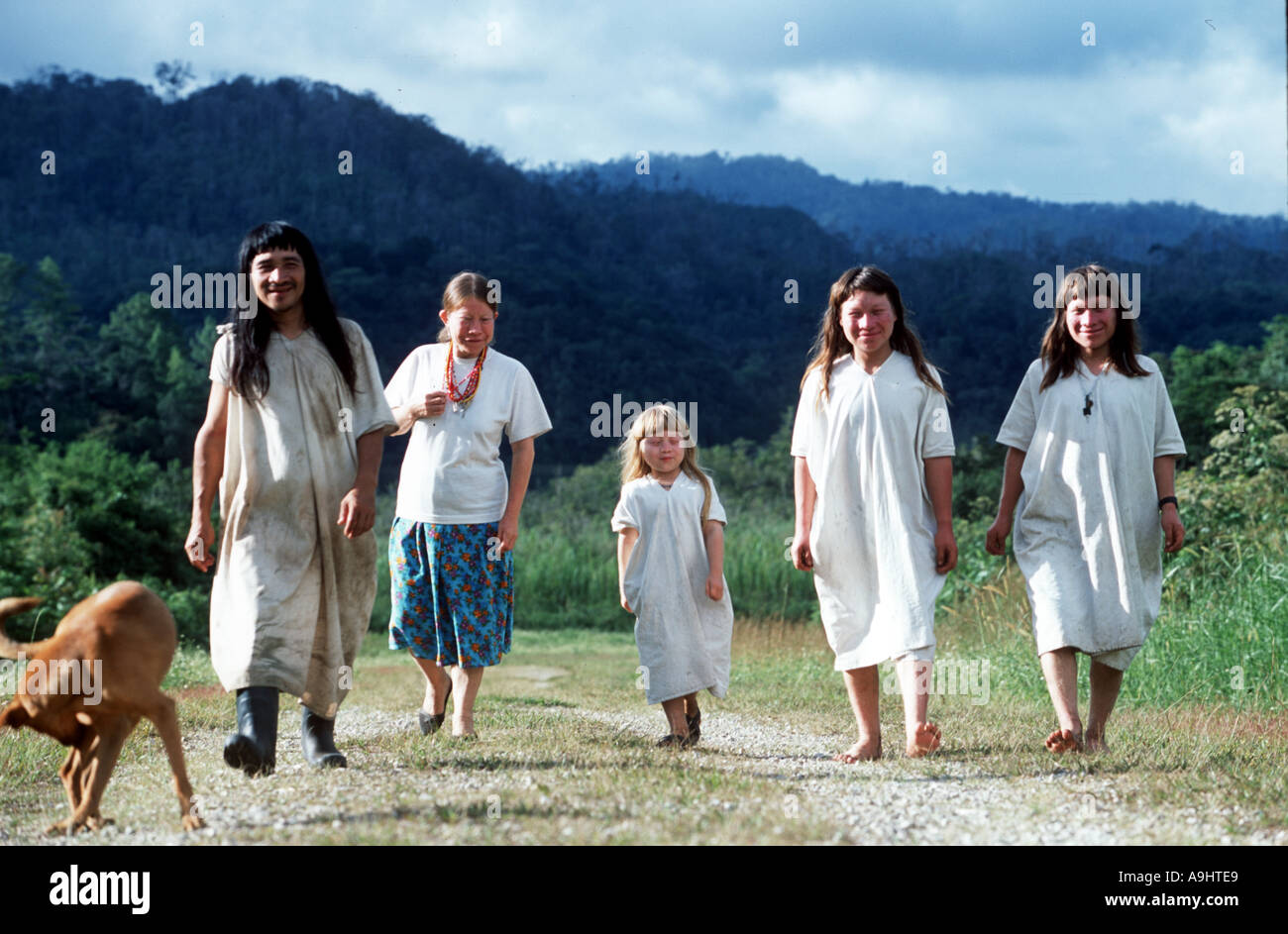 Mexico, Chiapas, Naha, Selva Lacandona, North America. Lacandon Indian family. Stock Photohttps://www.alamy.com/image-license-details/?v=1https://www.alamy.com/mexico-chiapas-naha-selva-lacandona-north-america-lacandon-indian-image4039912.html
Mexico, Chiapas, Naha, Selva Lacandona, North America. Lacandon Indian family. Stock Photohttps://www.alamy.com/image-license-details/?v=1https://www.alamy.com/mexico-chiapas-naha-selva-lacandona-north-america-lacandon-indian-image4039912.htmlRMA9HTE9–Mexico, Chiapas, Naha, Selva Lacandona, North America. Lacandon Indian family.
 A woman and her baby in the Otomí occupation at the National Institute of Indigenous Peoples in Mexico City, during celebrations to mark the 37th anniversary of the Zapatista Army of National Liberation (EZLN) in Mexico. The origins of the EZLN go back to the early years of the 1980s, when a small guerrilla group made up of mestizos and indigenous peoples settled in the mountainous area of the Lacandon Jungle, in Chiapas, with the intention of creating a front that would promote the struggle armed in the country. (Photo by Gerardo Vieyra/NurPhoto) Stock Photohttps://www.alamy.com/image-license-details/?v=1https://www.alamy.com/a-woman-and-her-baby-in-the-otom-occupation-at-the-national-institute-of-indigenous-peoples-in-mexico-city-during-celebrations-to-mark-the-37th-anniversary-of-the-zapatista-army-of-national-liberation-ezln-in-mexico-the-origins-of-the-ezln-go-back-to-the-early-years-of-the-1980s-when-a-small-guerrilla-group-made-up-of-mestizos-and-indigenous-peoples-settled-in-the-mountainous-area-of-the-lacandon-jungle-in-chiapas-with-the-intention-of-creating-a-front-that-would-promote-the-struggle-armed-in-the-country-photo-by-gerardo-vieyranurphoto-image489359527.html
A woman and her baby in the Otomí occupation at the National Institute of Indigenous Peoples in Mexico City, during celebrations to mark the 37th anniversary of the Zapatista Army of National Liberation (EZLN) in Mexico. The origins of the EZLN go back to the early years of the 1980s, when a small guerrilla group made up of mestizos and indigenous peoples settled in the mountainous area of the Lacandon Jungle, in Chiapas, with the intention of creating a front that would promote the struggle armed in the country. (Photo by Gerardo Vieyra/NurPhoto) Stock Photohttps://www.alamy.com/image-license-details/?v=1https://www.alamy.com/a-woman-and-her-baby-in-the-otom-occupation-at-the-national-institute-of-indigenous-peoples-in-mexico-city-during-celebrations-to-mark-the-37th-anniversary-of-the-zapatista-army-of-national-liberation-ezln-in-mexico-the-origins-of-the-ezln-go-back-to-the-early-years-of-the-1980s-when-a-small-guerrilla-group-made-up-of-mestizos-and-indigenous-peoples-settled-in-the-mountainous-area-of-the-lacandon-jungle-in-chiapas-with-the-intention-of-creating-a-front-that-would-promote-the-struggle-armed-in-the-country-photo-by-gerardo-vieyranurphoto-image489359527.htmlRM2KC471Y–A woman and her baby in the Otomí occupation at the National Institute of Indigenous Peoples in Mexico City, during celebrations to mark the 37th anniversary of the Zapatista Army of National Liberation (EZLN) in Mexico. The origins of the EZLN go back to the early years of the 1980s, when a small guerrilla group made up of mestizos and indigenous peoples settled in the mountainous area of the Lacandon Jungle, in Chiapas, with the intention of creating a front that would promote the struggle armed in the country. (Photo by Gerardo Vieyra/NurPhoto)
 A grocery store in the remote, indigenous Maya village of Frontera Corozal, Chiapas State, Mexico. Stock Photohttps://www.alamy.com/image-license-details/?v=1https://www.alamy.com/a-grocery-store-in-the-remote-indigenous-maya-village-of-frontera-corozal-chiapas-state-mexico-image336345709.html
A grocery store in the remote, indigenous Maya village of Frontera Corozal, Chiapas State, Mexico. Stock Photohttps://www.alamy.com/image-license-details/?v=1https://www.alamy.com/a-grocery-store-in-the-remote-indigenous-maya-village-of-frontera-corozal-chiapas-state-mexico-image336345709.htmlRF2AF5TAN–A grocery store in the remote, indigenous Maya village of Frontera Corozal, Chiapas State, Mexico.
 Panoramic view of Agua Azul waterfalls in Mexico - may 2 2024. High quality photo Stock Photohttps://www.alamy.com/image-license-details/?v=1https://www.alamy.com/panoramic-view-of-agua-azul-waterfalls-in-mexico-may-2-2024-high-quality-photo-image616554335.html
Panoramic view of Agua Azul waterfalls in Mexico - may 2 2024. High quality photo Stock Photohttps://www.alamy.com/image-license-details/?v=1https://www.alamy.com/panoramic-view-of-agua-azul-waterfalls-in-mexico-may-2-2024-high-quality-photo-image616554335.htmlRF2XR2D9K–Panoramic view of Agua Azul waterfalls in Mexico - may 2 2024. High quality photo
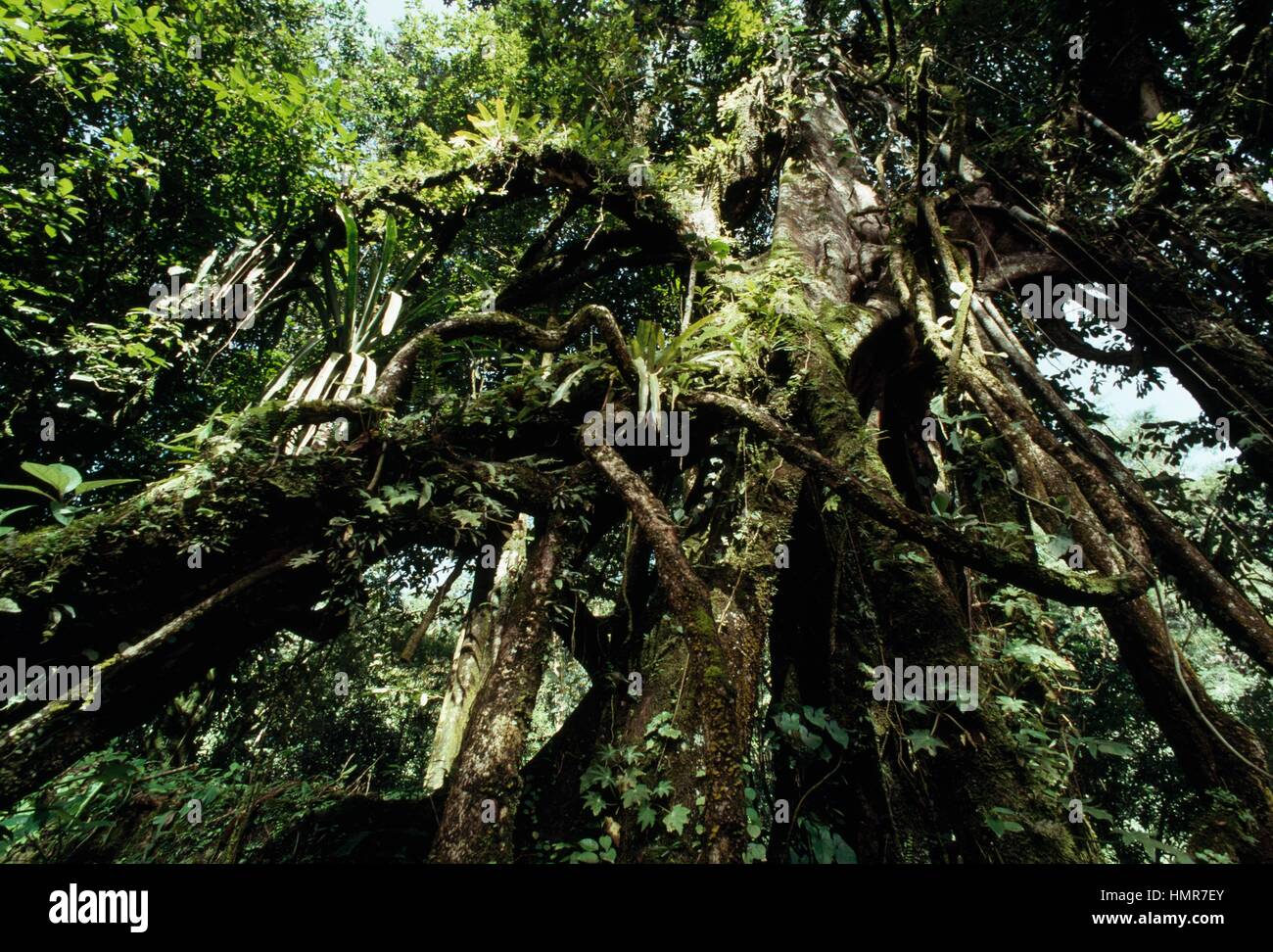 Mesoamerican rainforest, Lacandon Jungle, Chiapas, Mexico. Stock Photohttps://www.alamy.com/image-license-details/?v=1https://www.alamy.com/stock-photo-mesoamerican-rainforest-lacandon-jungle-chiapas-mexico-133276499.html
Mesoamerican rainforest, Lacandon Jungle, Chiapas, Mexico. Stock Photohttps://www.alamy.com/image-license-details/?v=1https://www.alamy.com/stock-photo-mesoamerican-rainforest-lacandon-jungle-chiapas-mexico-133276499.htmlRMHMR7EY–Mesoamerican rainforest, Lacandon Jungle, Chiapas, Mexico.
 Indian Boy Maya La Candon Chiapas Mexico La Candon rainforest Chiapas Mexico Stock Photohttps://www.alamy.com/image-license-details/?v=1https://www.alamy.com/stock-photo-indian-boy-maya-la-candon-chiapas-mexico-la-candon-rainforest-chiapas-10929357.html
Indian Boy Maya La Candon Chiapas Mexico La Candon rainforest Chiapas Mexico Stock Photohttps://www.alamy.com/image-license-details/?v=1https://www.alamy.com/stock-photo-indian-boy-maya-la-candon-chiapas-mexico-la-candon-rainforest-chiapas-10929357.htmlRMA44AEP–Indian Boy Maya La Candon Chiapas Mexico La Candon rainforest Chiapas Mexico
 Lacandon Maya Women Doing Laundry In The Usumacinta River, Chiapas, Mexico Stock Photohttps://www.alamy.com/image-license-details/?v=1https://www.alamy.com/stock-photo-lacandon-maya-women-doing-laundry-in-the-usumacinta-river-chiapas-81341923.html
Lacandon Maya Women Doing Laundry In The Usumacinta River, Chiapas, Mexico Stock Photohttps://www.alamy.com/image-license-details/?v=1https://www.alamy.com/stock-photo-lacandon-maya-women-doing-laundry-in-the-usumacinta-river-chiapas-81341923.htmlRMEM9CCK–Lacandon Maya Women Doing Laundry In The Usumacinta River, Chiapas, Mexico
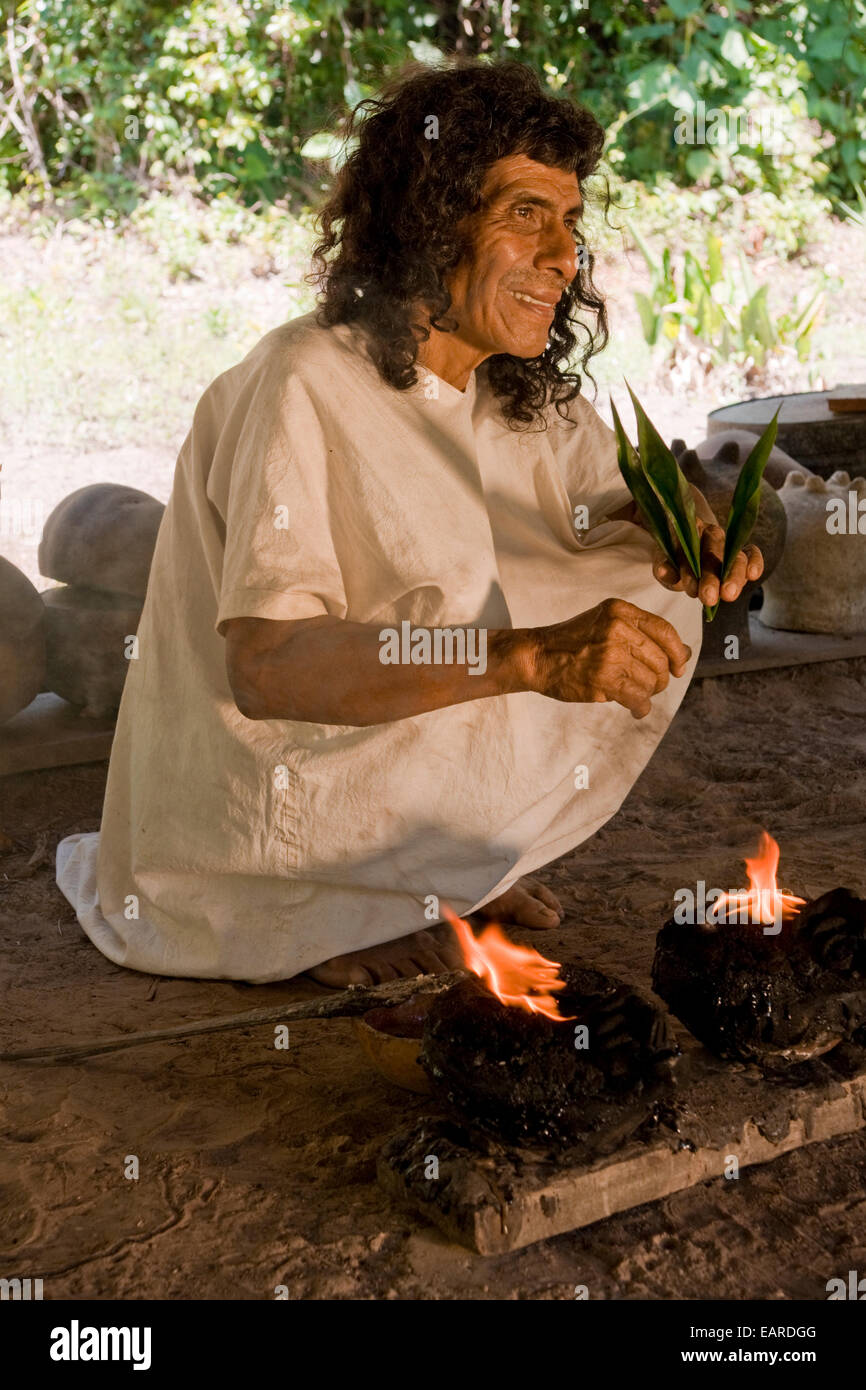 Shaman of the Lacandon tribe at a ceremony, Selva Lacandona, Nahá, Chiapas, Mexico Stock Photohttps://www.alamy.com/image-license-details/?v=1https://www.alamy.com/stock-photo-shaman-of-the-lacandon-tribe-at-a-ceremony-selva-lacandona-nah-chiapas-75503584.html
Shaman of the Lacandon tribe at a ceremony, Selva Lacandona, Nahá, Chiapas, Mexico Stock Photohttps://www.alamy.com/image-license-details/?v=1https://www.alamy.com/stock-photo-shaman-of-the-lacandon-tribe-at-a-ceremony-selva-lacandona-nah-chiapas-75503584.htmlRMEARDGG–Shaman of the Lacandon tribe at a ceremony, Selva Lacandona, Nahá, Chiapas, Mexico
 Women cook over a wood burning stove inside their home in the Lacandon Maya community of Naha, Chiapas, Mexico. Stock Photohttps://www.alamy.com/image-license-details/?v=1https://www.alamy.com/stock-photo-women-cook-over-a-wood-burning-stove-inside-their-home-in-the-lacandon-23160079.html
Women cook over a wood burning stove inside their home in the Lacandon Maya community of Naha, Chiapas, Mexico. Stock Photohttps://www.alamy.com/image-license-details/?v=1https://www.alamy.com/stock-photo-women-cook-over-a-wood-burning-stove-inside-their-home-in-the-lacandon-23160079.htmlRFB9K0WK–Women cook over a wood burning stove inside their home in the Lacandon Maya community of Naha, Chiapas, Mexico.
 Shaman of the Lacandon with burning Copal in Maya temple in Naha in the Lacandon jungle in Chiapas, Mexico, Chiapas, Lacandonen Stock Photohttps://www.alamy.com/image-license-details/?v=1https://www.alamy.com/stock-photo-shaman-of-the-lacandon-with-burning-copal-in-maya-temple-in-naha-in-21794224.html
Shaman of the Lacandon with burning Copal in Maya temple in Naha in the Lacandon jungle in Chiapas, Mexico, Chiapas, Lacandonen Stock Photohttps://www.alamy.com/image-license-details/?v=1https://www.alamy.com/stock-photo-shaman-of-the-lacandon-with-burning-copal-in-maya-temple-in-naha-in-21794224.htmlRMB7CPN4–Shaman of the Lacandon with burning Copal in Maya temple in Naha in the Lacandon jungle in Chiapas, Mexico, Chiapas, Lacandonen
 Albino Lacandon Indian (Hach Winik) boy Chan Bor standing at the doorway to his house in the village of Nahá, Mexico. Stock Photohttps://www.alamy.com/image-license-details/?v=1https://www.alamy.com/stock-photo-albino-lacandon-indian-hach-winik-boy-chan-bor-standing-at-the-doorway-23433026.html
Albino Lacandon Indian (Hach Winik) boy Chan Bor standing at the doorway to his house in the village of Nahá, Mexico. Stock Photohttps://www.alamy.com/image-license-details/?v=1https://www.alamy.com/stock-photo-albino-lacandon-indian-hach-winik-boy-chan-bor-standing-at-the-doorway-23433026.htmlRMBA3D1P–Albino Lacandon Indian (Hach Winik) boy Chan Bor standing at the doorway to his house in the village of Nahá, Mexico.
 Mexico, Chiapas, Yaxchilan, Lacandon at the top of the great acropolis, the Lacandons, the last descendants of the Maya live near Yaxchilan the Mayan royal city of the end of 600 BC. The Mexican government gave to the Lacandons in 1972 a territory of 662,000 hectares around Yaxchilan and Bonampak. In Maya the Lacandons are called Hach Vinik the real men, always dressed in a white tunic they live in a very reduced community in the state of Chapias Stock Photohttps://www.alamy.com/image-license-details/?v=1https://www.alamy.com/stock-photo-mexico-chiapas-yaxchilan-lacandon-at-the-top-of-the-great-acropolis-136310084.html
Mexico, Chiapas, Yaxchilan, Lacandon at the top of the great acropolis, the Lacandons, the last descendants of the Maya live near Yaxchilan the Mayan royal city of the end of 600 BC. The Mexican government gave to the Lacandons in 1972 a territory of 662,000 hectares around Yaxchilan and Bonampak. In Maya the Lacandons are called Hach Vinik the real men, always dressed in a white tunic they live in a very reduced community in the state of Chapias Stock Photohttps://www.alamy.com/image-license-details/?v=1https://www.alamy.com/stock-photo-mexico-chiapas-yaxchilan-lacandon-at-the-top-of-the-great-acropolis-136310084.htmlRFHWNCW8–Mexico, Chiapas, Yaxchilan, Lacandon at the top of the great acropolis, the Lacandons, the last descendants of the Maya live near Yaxchilan the Mayan royal city of the end of 600 BC. The Mexican government gave to the Lacandons in 1972 a territory of 662,000 hectares around Yaxchilan and Bonampak. In Maya the Lacandons are called Hach Vinik the real men, always dressed in a white tunic they live in a very reduced community in the state of Chapias
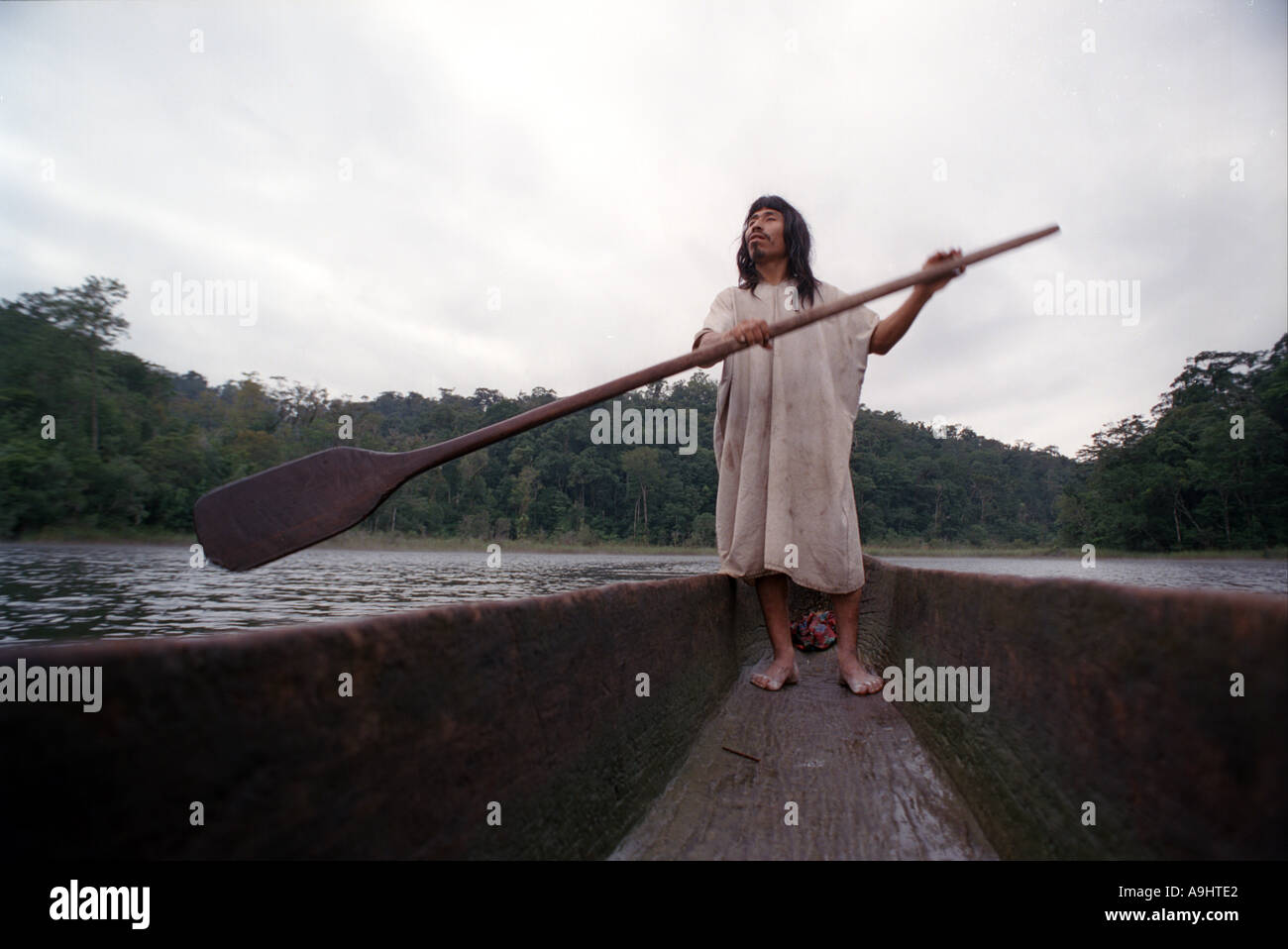 North America, Mexico, Chiapas, Naha, Selva Lacandona. Lacandon Maya jungle guide. Stock Photohttps://www.alamy.com/image-license-details/?v=1https://www.alamy.com/north-america-mexico-chiapas-naha-selva-lacandona-lacandon-maya-jungle-image4039905.html
North America, Mexico, Chiapas, Naha, Selva Lacandona. Lacandon Maya jungle guide. Stock Photohttps://www.alamy.com/image-license-details/?v=1https://www.alamy.com/north-america-mexico-chiapas-naha-selva-lacandona-lacandon-maya-jungle-image4039905.htmlRMA9HTE2–North America, Mexico, Chiapas, Naha, Selva Lacandona. Lacandon Maya jungle guide.
 Members of the Otomí community in the occupation of the National Institute of Indigenous Peoples in Mexico City, during cake cutting and celebrations to mark the 37th anniversary of the Zapatista Army of National Liberation (EZLN) in Mexico. The origins of the EZLN go back to the early years of the 1980s, when a small guerrilla group made up of mestizos and indigenous peoples settled in the mountainous area of the Lacandon Jungle, in Chiapas, with the intention of creating a front that would promote the struggle armed in the country. (Photo by Gerardo Vieyra/NurPhoto) Stock Photohttps://www.alamy.com/image-license-details/?v=1https://www.alamy.com/members-of-the-otom-community-in-the-occupation-of-the-national-institute-of-indigenous-peoples-in-mexico-city-during-cake-cutting-and-celebrations-to-mark-the-37th-anniversary-of-the-zapatista-army-of-national-liberation-ezln-in-mexico-the-origins-of-the-ezln-go-back-to-the-early-years-of-the-1980s-when-a-small-guerrilla-group-made-up-of-mestizos-and-indigenous-peoples-settled-in-the-mountainous-area-of-the-lacandon-jungle-in-chiapas-with-the-intention-of-creating-a-front-that-would-promote-the-struggle-armed-in-the-country-photo-by-gerardo-vieyranurphoto-image489359546.html
Members of the Otomí community in the occupation of the National Institute of Indigenous Peoples in Mexico City, during cake cutting and celebrations to mark the 37th anniversary of the Zapatista Army of National Liberation (EZLN) in Mexico. The origins of the EZLN go back to the early years of the 1980s, when a small guerrilla group made up of mestizos and indigenous peoples settled in the mountainous area of the Lacandon Jungle, in Chiapas, with the intention of creating a front that would promote the struggle armed in the country. (Photo by Gerardo Vieyra/NurPhoto) Stock Photohttps://www.alamy.com/image-license-details/?v=1https://www.alamy.com/members-of-the-otom-community-in-the-occupation-of-the-national-institute-of-indigenous-peoples-in-mexico-city-during-cake-cutting-and-celebrations-to-mark-the-37th-anniversary-of-the-zapatista-army-of-national-liberation-ezln-in-mexico-the-origins-of-the-ezln-go-back-to-the-early-years-of-the-1980s-when-a-small-guerrilla-group-made-up-of-mestizos-and-indigenous-peoples-settled-in-the-mountainous-area-of-the-lacandon-jungle-in-chiapas-with-the-intention-of-creating-a-front-that-would-promote-the-struggle-armed-in-the-country-photo-by-gerardo-vieyranurphoto-image489359546.htmlRM2KC472J–Members of the Otomí community in the occupation of the National Institute of Indigenous Peoples in Mexico City, during cake cutting and celebrations to mark the 37th anniversary of the Zapatista Army of National Liberation (EZLN) in Mexico. The origins of the EZLN go back to the early years of the 1980s, when a small guerrilla group made up of mestizos and indigenous peoples settled in the mountainous area of the Lacandon Jungle, in Chiapas, with the intention of creating a front that would promote the struggle armed in the country. (Photo by Gerardo Vieyra/NurPhoto)
 exico, Chiapas, Lacandon Jungle. Tzeltal Indians cultivate 'abono verde' or green organic fertilizer Stock Photohttps://www.alamy.com/image-license-details/?v=1https://www.alamy.com/exico-chiapas-lacandon-jungle-tzeltal-indians-cultivate-abono-verde-image3858464.html
exico, Chiapas, Lacandon Jungle. Tzeltal Indians cultivate 'abono verde' or green organic fertilizer Stock Photohttps://www.alamy.com/image-license-details/?v=1https://www.alamy.com/exico-chiapas-lacandon-jungle-tzeltal-indians-cultivate-abono-verde-image3858464.htmlRMA7ET21–exico, Chiapas, Lacandon Jungle. Tzeltal Indians cultivate 'abono verde' or green organic fertilizer
 A new house being built in the small, indigenous Maya village of Frontera Corozal, Chiapas State, Mexico. Stock Photohttps://www.alamy.com/image-license-details/?v=1https://www.alamy.com/a-new-house-being-built-in-the-small-indigenous-maya-village-of-frontera-corozal-chiapas-state-mexico-image336345702.html
A new house being built in the small, indigenous Maya village of Frontera Corozal, Chiapas State, Mexico. Stock Photohttps://www.alamy.com/image-license-details/?v=1https://www.alamy.com/a-new-house-being-built-in-the-small-indigenous-maya-village-of-frontera-corozal-chiapas-state-mexico-image336345702.htmlRF2AF5TAE–A new house being built in the small, indigenous Maya village of Frontera Corozal, Chiapas State, Mexico.
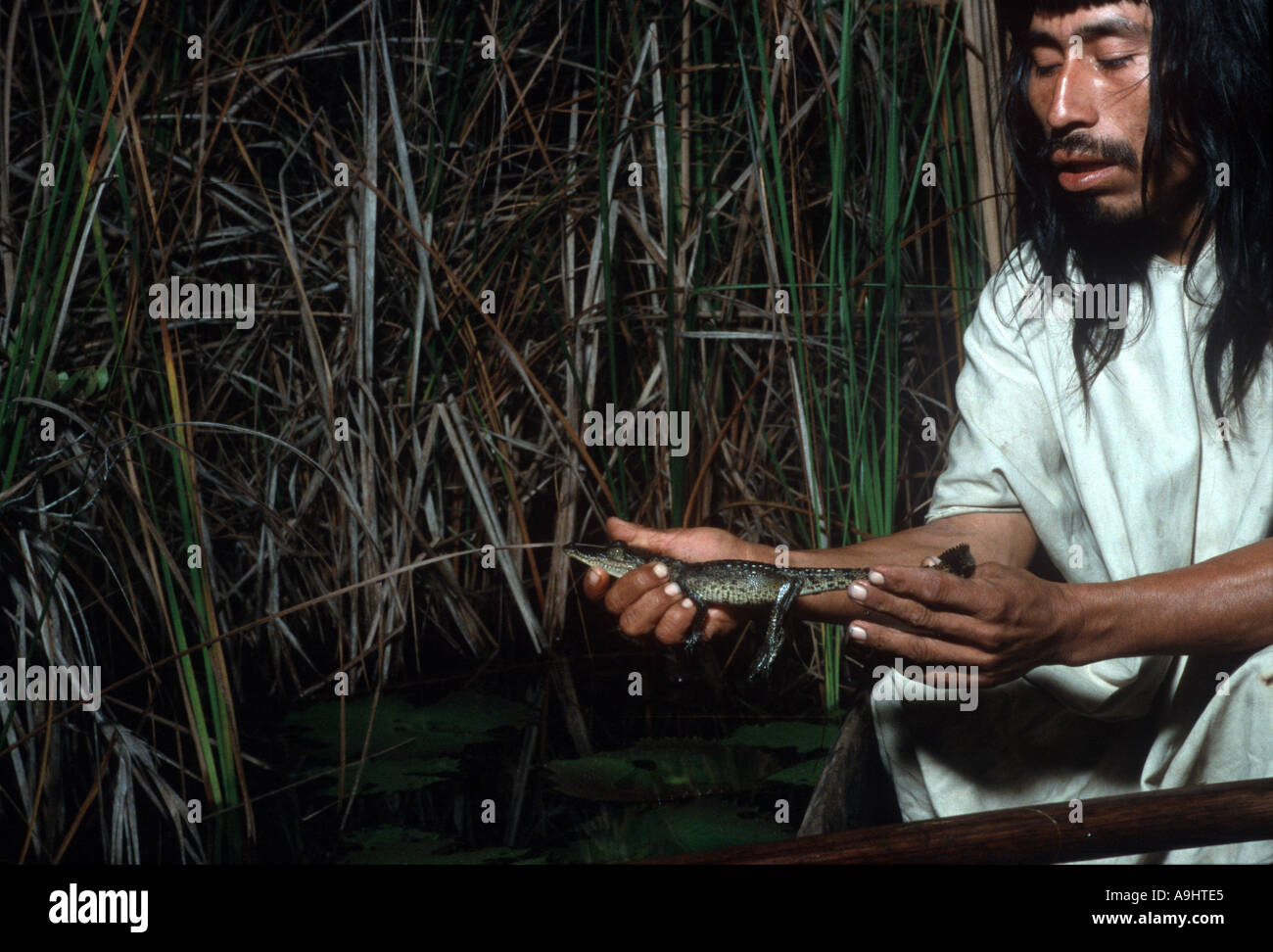 Mexico, Chiapas, Naha, Selva Lacandona, North America. Lacandon Maya jungle guide. Stock Photohttps://www.alamy.com/image-license-details/?v=1https://www.alamy.com/mexico-chiapas-naha-selva-lacandona-north-america-lacandon-maya-jungle-image4039908.html
Mexico, Chiapas, Naha, Selva Lacandona, North America. Lacandon Maya jungle guide. Stock Photohttps://www.alamy.com/image-license-details/?v=1https://www.alamy.com/mexico-chiapas-naha-selva-lacandona-north-america-lacandon-maya-jungle-image4039908.htmlRMA9HTE5–Mexico, Chiapas, Naha, Selva Lacandona, North America. Lacandon Maya jungle guide.
 Panoramic view of Agua Azul waterfalls in Mexico - may 2 2024. High quality photo Stock Photohttps://www.alamy.com/image-license-details/?v=1https://www.alamy.com/panoramic-view-of-agua-azul-waterfalls-in-mexico-may-2-2024-high-quality-photo-image616554514.html
Panoramic view of Agua Azul waterfalls in Mexico - may 2 2024. High quality photo Stock Photohttps://www.alamy.com/image-license-details/?v=1https://www.alamy.com/panoramic-view-of-agua-azul-waterfalls-in-mexico-may-2-2024-high-quality-photo-image616554514.htmlRF2XR2DG2–Panoramic view of Agua Azul waterfalls in Mexico - may 2 2024. High quality photo
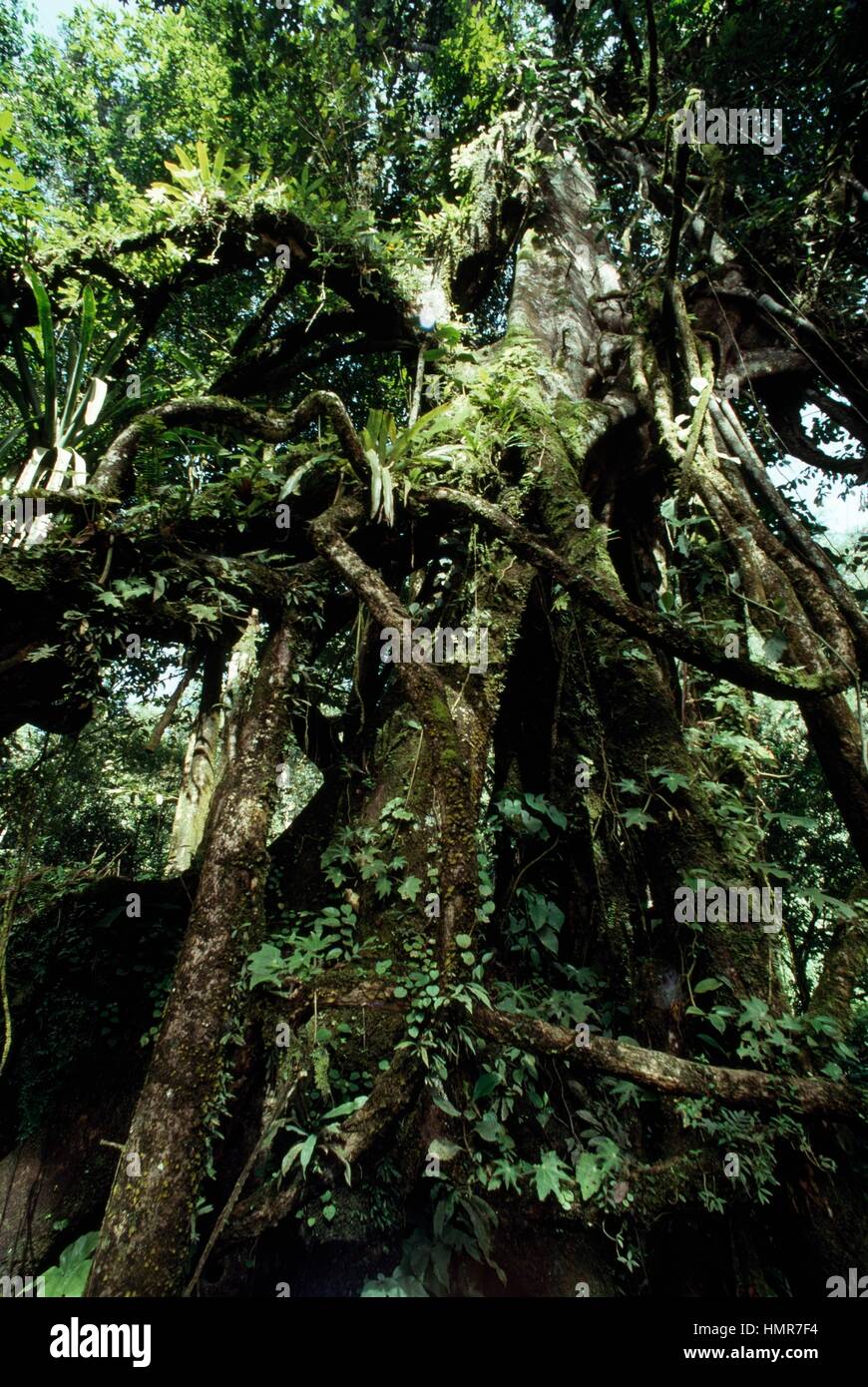 Mesoamerican rainforest, Lacandon Jungle, Chiapas, Mexico. Stock Photohttps://www.alamy.com/image-license-details/?v=1https://www.alamy.com/stock-photo-mesoamerican-rainforest-lacandon-jungle-chiapas-mexico-133276504.html
Mesoamerican rainforest, Lacandon Jungle, Chiapas, Mexico. Stock Photohttps://www.alamy.com/image-license-details/?v=1https://www.alamy.com/stock-photo-mesoamerican-rainforest-lacandon-jungle-chiapas-mexico-133276504.htmlRMHMR7F4–Mesoamerican rainforest, Lacandon Jungle, Chiapas, Mexico.
 Indian Boy Maya La Candon Chiapas Mexico La Candon rainforest Chiapas Mexico In dug out canoe Stock Photohttps://www.alamy.com/image-license-details/?v=1https://www.alamy.com/stock-photo-indian-boy-maya-la-candon-chiapas-mexico-la-candon-rainforest-chiapas-10929318.html
Indian Boy Maya La Candon Chiapas Mexico La Candon rainforest Chiapas Mexico In dug out canoe Stock Photohttps://www.alamy.com/image-license-details/?v=1https://www.alamy.com/stock-photo-indian-boy-maya-la-candon-chiapas-mexico-la-candon-rainforest-chiapas-10929318.htmlRMA44ABK–Indian Boy Maya La Candon Chiapas Mexico La Candon rainforest Chiapas Mexico In dug out canoe
 Boy from the Lacandon tribe preparing to fish in the lagoon near the village of Naha, Selva Lacandona, Nahá, Chiapas, Mexico Stock Photohttps://www.alamy.com/image-license-details/?v=1https://www.alamy.com/stock-photo-boy-from-the-lacandon-tribe-preparing-to-fish-in-the-lagoon-near-the-75503594.html
Boy from the Lacandon tribe preparing to fish in the lagoon near the village of Naha, Selva Lacandona, Nahá, Chiapas, Mexico Stock Photohttps://www.alamy.com/image-license-details/?v=1https://www.alamy.com/stock-photo-boy-from-the-lacandon-tribe-preparing-to-fish-in-the-lagoon-near-the-75503594.htmlRMEARDGX–Boy from the Lacandon tribe preparing to fish in the lagoon near the village of Naha, Selva Lacandona, Nahá, Chiapas, Mexico
 Shaman of the Lacandon Indians calls with conch the gods during ritual in Maya temple in Naha in the Lacandon jungle in Chiapas Stock Photohttps://www.alamy.com/image-license-details/?v=1https://www.alamy.com/stock-photo-shaman-of-the-lacandon-indians-calls-with-conch-the-gods-during-ritual-21794207.html
Shaman of the Lacandon Indians calls with conch the gods during ritual in Maya temple in Naha in the Lacandon jungle in Chiapas Stock Photohttps://www.alamy.com/image-license-details/?v=1https://www.alamy.com/stock-photo-shaman-of-the-lacandon-indians-calls-with-conch-the-gods-during-ritual-21794207.htmlRMB7CPMF–Shaman of the Lacandon Indians calls with conch the gods during ritual in Maya temple in Naha in the Lacandon jungle in Chiapas
 Mexico, Chiapas, Yaxchilan, Lacandon at the top of the great acropolis, the Lacandons, the last descendants of the Maya live near Yaxchilan the Mayan royal city of the end of 600 BC. The Mexican government gave to the Lacandons in 1972 a territory of 662,000 hectares around Yaxchilan and Bonampak. In Maya the Lacandons are called Hach Vinik the real men, always dressed in a white tunic they live in a very reduced community in the state of Chapias Stock Photohttps://www.alamy.com/image-license-details/?v=1https://www.alamy.com/stock-photo-mexico-chiapas-yaxchilan-lacandon-at-the-top-of-the-great-acropolis-136310073.html
Mexico, Chiapas, Yaxchilan, Lacandon at the top of the great acropolis, the Lacandons, the last descendants of the Maya live near Yaxchilan the Mayan royal city of the end of 600 BC. The Mexican government gave to the Lacandons in 1972 a territory of 662,000 hectares around Yaxchilan and Bonampak. In Maya the Lacandons are called Hach Vinik the real men, always dressed in a white tunic they live in a very reduced community in the state of Chapias Stock Photohttps://www.alamy.com/image-license-details/?v=1https://www.alamy.com/stock-photo-mexico-chiapas-yaxchilan-lacandon-at-the-top-of-the-great-acropolis-136310073.htmlRFHWNCTW–Mexico, Chiapas, Yaxchilan, Lacandon at the top of the great acropolis, the Lacandons, the last descendants of the Maya live near Yaxchilan the Mayan royal city of the end of 600 BC. The Mexican government gave to the Lacandons in 1972 a territory of 662,000 hectares around Yaxchilan and Bonampak. In Maya the Lacandons are called Hach Vinik the real men, always dressed in a white tunic they live in a very reduced community in the state of Chapias
 A woman from the Otomí occupation at the National Institute of Indigenous Peoples in Mexico City, weaving during celebrations to mark the 37th anniversary of the Zapatista Army of National Liberation (EZLN) in Mexico. The origins of the EZLN go back to the early years of the 1980s, when a small guerrilla group made up of mestizos and indigenous peoples settled in the mountainous area of the Lacandon Jungle, in Chiapas, with the intention of creating a front that would promote the struggle armed in the country. (Photo by Gerardo Vieyra/NurPhoto) Stock Photohttps://www.alamy.com/image-license-details/?v=1https://www.alamy.com/a-woman-from-the-otom-occupation-at-the-national-institute-of-indigenous-peoples-in-mexico-city-weaving-during-celebrations-to-mark-the-37th-anniversary-of-the-zapatista-army-of-national-liberation-ezln-in-mexico-the-origins-of-the-ezln-go-back-to-the-early-years-of-the-1980s-when-a-small-guerrilla-group-made-up-of-mestizos-and-indigenous-peoples-settled-in-the-mountainous-area-of-the-lacandon-jungle-in-chiapas-with-the-intention-of-creating-a-front-that-would-promote-the-struggle-armed-in-the-country-photo-by-gerardo-vieyranurphoto-image489359525.html
A woman from the Otomí occupation at the National Institute of Indigenous Peoples in Mexico City, weaving during celebrations to mark the 37th anniversary of the Zapatista Army of National Liberation (EZLN) in Mexico. The origins of the EZLN go back to the early years of the 1980s, when a small guerrilla group made up of mestizos and indigenous peoples settled in the mountainous area of the Lacandon Jungle, in Chiapas, with the intention of creating a front that would promote the struggle armed in the country. (Photo by Gerardo Vieyra/NurPhoto) Stock Photohttps://www.alamy.com/image-license-details/?v=1https://www.alamy.com/a-woman-from-the-otom-occupation-at-the-national-institute-of-indigenous-peoples-in-mexico-city-weaving-during-celebrations-to-mark-the-37th-anniversary-of-the-zapatista-army-of-national-liberation-ezln-in-mexico-the-origins-of-the-ezln-go-back-to-the-early-years-of-the-1980s-when-a-small-guerrilla-group-made-up-of-mestizos-and-indigenous-peoples-settled-in-the-mountainous-area-of-the-lacandon-jungle-in-chiapas-with-the-intention-of-creating-a-front-that-would-promote-the-struggle-armed-in-the-country-photo-by-gerardo-vieyranurphoto-image489359525.htmlRM2KC471W–A woman from the Otomí occupation at the National Institute of Indigenous Peoples in Mexico City, weaving during celebrations to mark the 37th anniversary of the Zapatista Army of National Liberation (EZLN) in Mexico. The origins of the EZLN go back to the early years of the 1980s, when a small guerrilla group made up of mestizos and indigenous peoples settled in the mountainous area of the Lacandon Jungle, in Chiapas, with the intention of creating a front that would promote the struggle armed in the country. (Photo by Gerardo Vieyra/NurPhoto)
 Mexico, Chiapas, Naha, Selva Lacandona, North America. Lacandon Maya jungle guide. Stock Photohttps://www.alamy.com/image-license-details/?v=1https://www.alamy.com/mexico-chiapas-naha-selva-lacandona-north-america-lacandon-maya-jungle-image4039907.html
Mexico, Chiapas, Naha, Selva Lacandona, North America. Lacandon Maya jungle guide. Stock Photohttps://www.alamy.com/image-license-details/?v=1https://www.alamy.com/mexico-chiapas-naha-selva-lacandona-north-america-lacandon-maya-jungle-image4039907.htmlRMA9HTE4–Mexico, Chiapas, Naha, Selva Lacandona, North America. Lacandon Maya jungle guide.
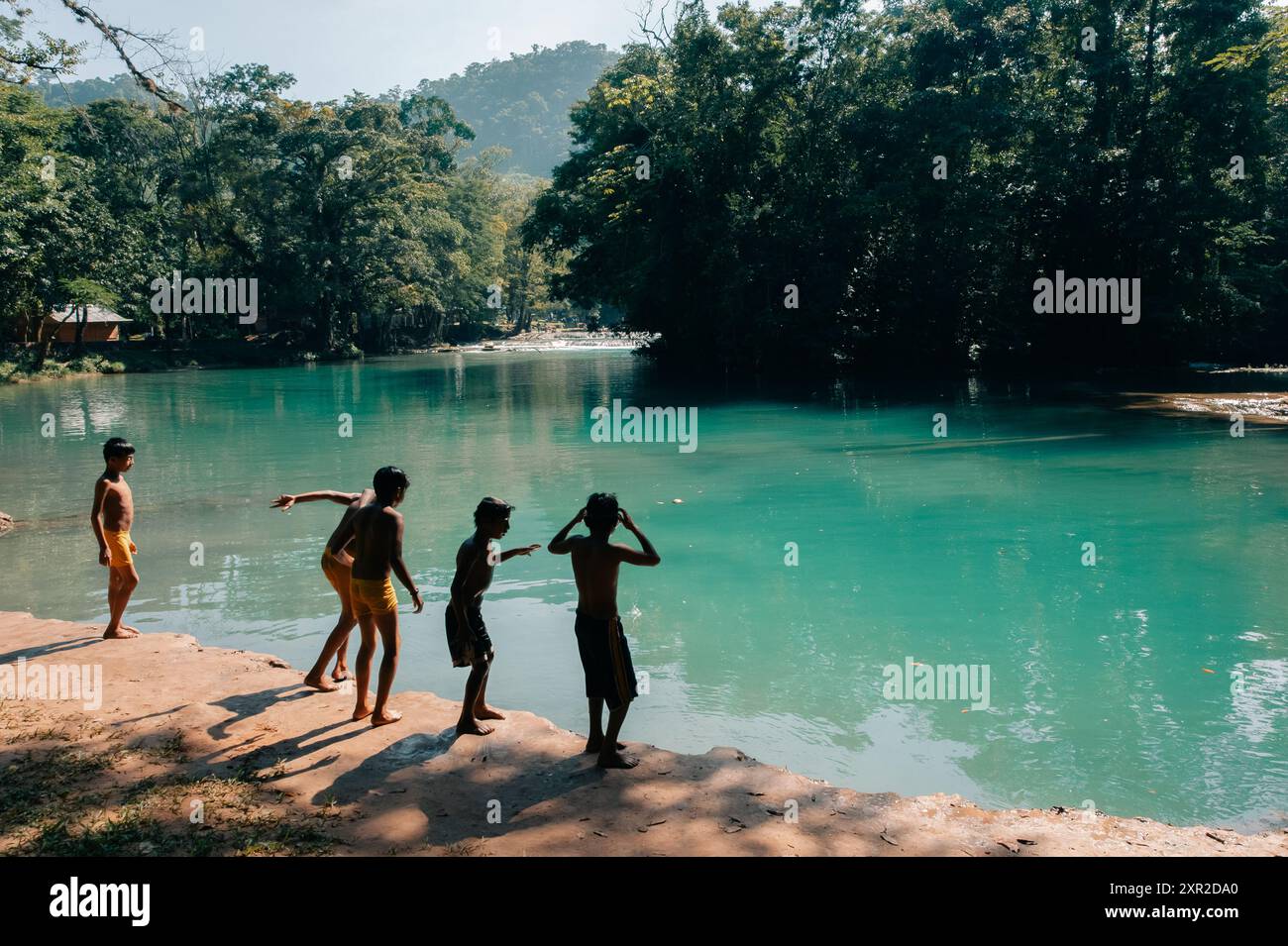 Panoramic view of Agua Azul waterfalls in Mexico - may 2 2024. High quality photo Stock Photohttps://www.alamy.com/image-license-details/?v=1https://www.alamy.com/panoramic-view-of-agua-azul-waterfalls-in-mexico-may-2-2024-high-quality-photo-image616554344.html
Panoramic view of Agua Azul waterfalls in Mexico - may 2 2024. High quality photo Stock Photohttps://www.alamy.com/image-license-details/?v=1https://www.alamy.com/panoramic-view-of-agua-azul-waterfalls-in-mexico-may-2-2024-high-quality-photo-image616554344.htmlRF2XR2DA0–Panoramic view of Agua Azul waterfalls in Mexico - may 2 2024. High quality photo
 Mesoamerican rainforest, Lacandon Jungle, Chiapas, Mexico. Stock Photohttps://www.alamy.com/image-license-details/?v=1https://www.alamy.com/stock-photo-mesoamerican-rainforest-lacandon-jungle-chiapas-mexico-133276501.html
Mesoamerican rainforest, Lacandon Jungle, Chiapas, Mexico. Stock Photohttps://www.alamy.com/image-license-details/?v=1https://www.alamy.com/stock-photo-mesoamerican-rainforest-lacandon-jungle-chiapas-mexico-133276501.htmlRMHMR7F1–Mesoamerican rainforest, Lacandon Jungle, Chiapas, Mexico.
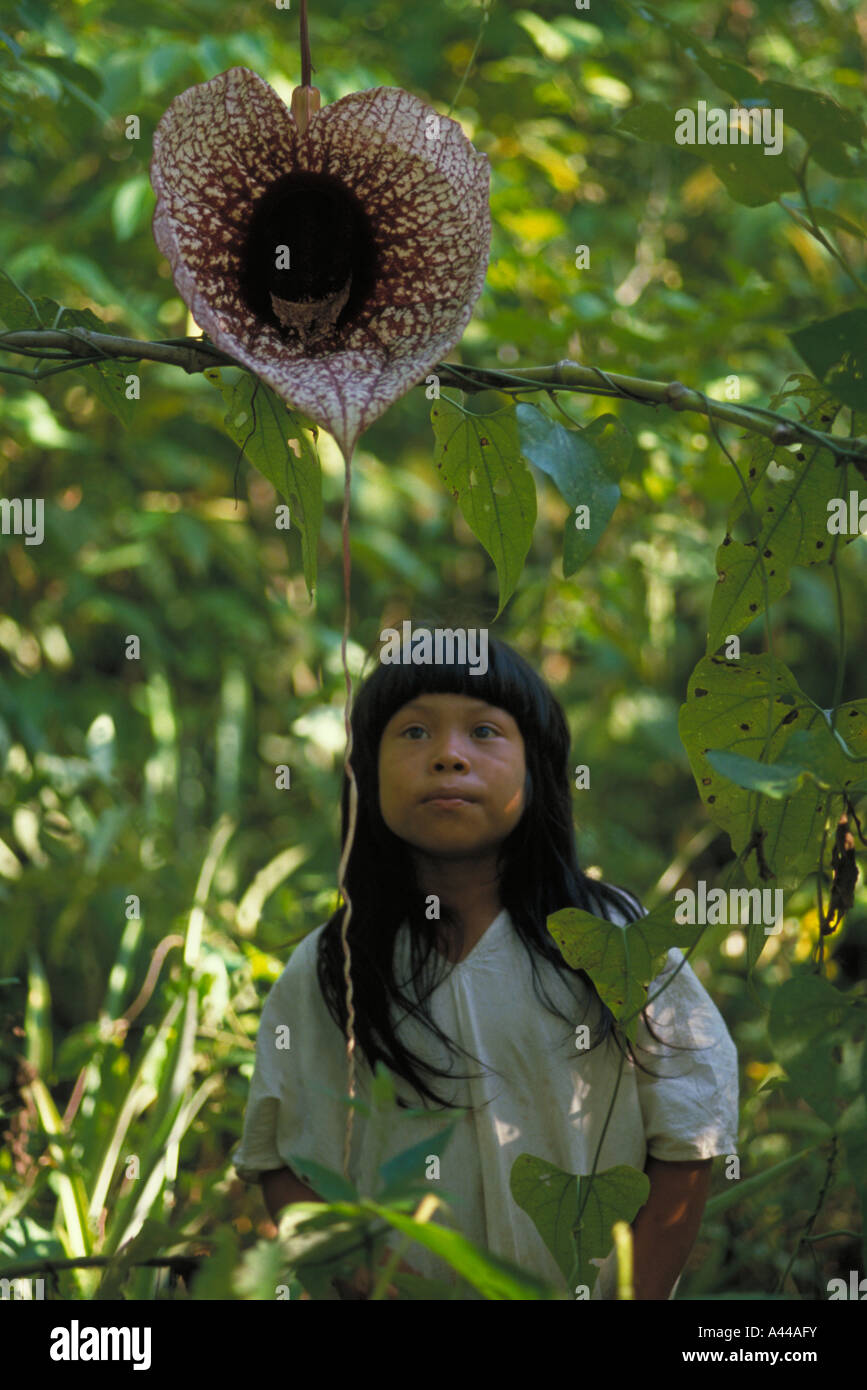 Indian Boy Maya La Candon Chiapas Mexico La Candon rainforest Chiapas Mexico Looking at Flor de Pato Aristolochia Stock Photohttps://www.alamy.com/image-license-details/?v=1https://www.alamy.com/stock-photo-indian-boy-maya-la-candon-chiapas-mexico-la-candon-rainforest-chiapas-10929374.html
Indian Boy Maya La Candon Chiapas Mexico La Candon rainforest Chiapas Mexico Looking at Flor de Pato Aristolochia Stock Photohttps://www.alamy.com/image-license-details/?v=1https://www.alamy.com/stock-photo-indian-boy-maya-la-candon-chiapas-mexico-la-candon-rainforest-chiapas-10929374.htmlRMA44AFY–Indian Boy Maya La Candon Chiapas Mexico La Candon rainforest Chiapas Mexico Looking at Flor de Pato Aristolochia
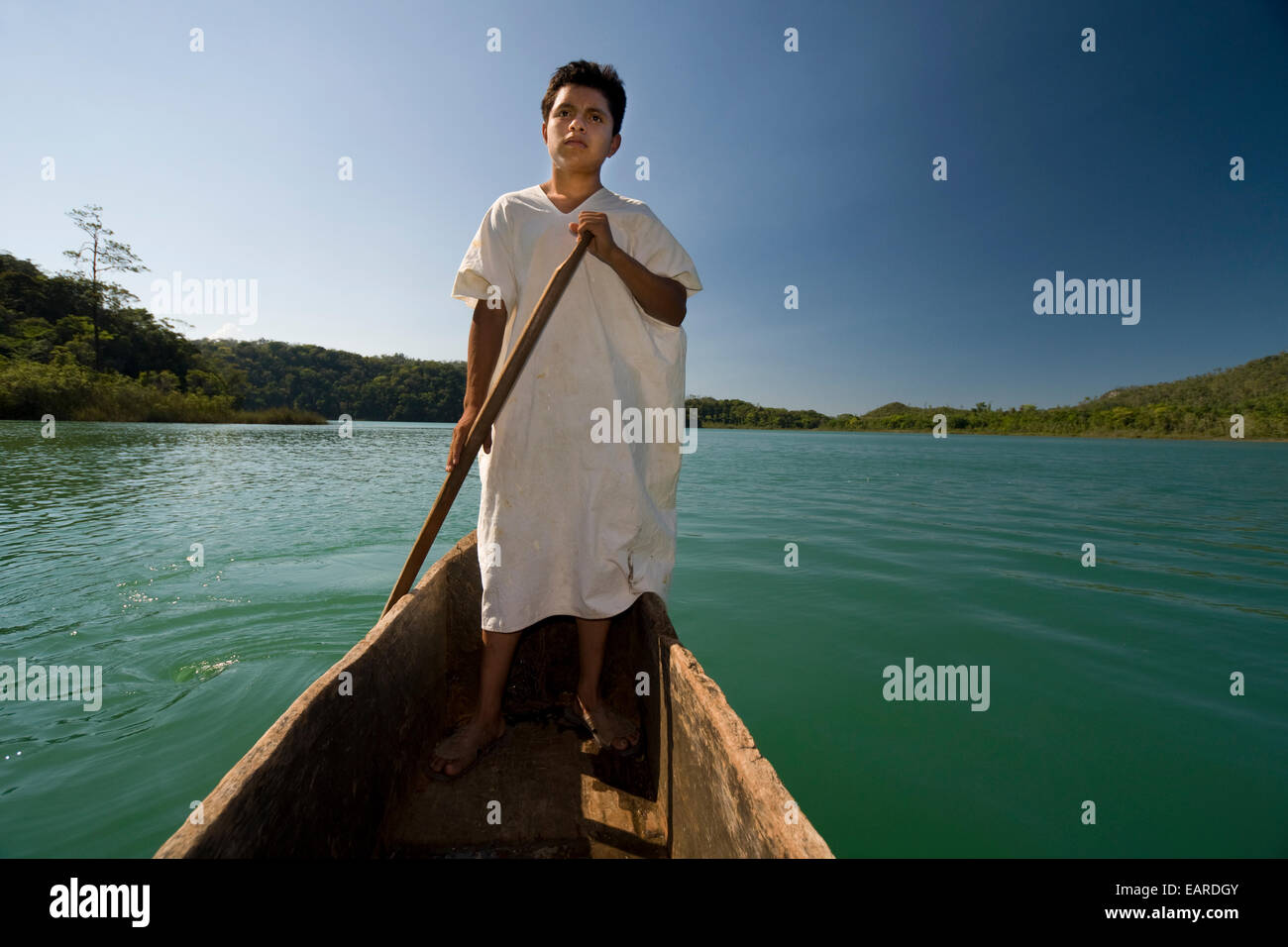 Boy from the Lacandon tribe preparing to fish in the lagoon near the village of Naha, Selva Lacandona, Nahá, Chiapas, Mexico Stock Photohttps://www.alamy.com/image-license-details/?v=1https://www.alamy.com/stock-photo-boy-from-the-lacandon-tribe-preparing-to-fish-in-the-lagoon-near-the-75503595.html
Boy from the Lacandon tribe preparing to fish in the lagoon near the village of Naha, Selva Lacandona, Nahá, Chiapas, Mexico Stock Photohttps://www.alamy.com/image-license-details/?v=1https://www.alamy.com/stock-photo-boy-from-the-lacandon-tribe-preparing-to-fish-in-the-lagoon-near-the-75503595.htmlRMEARDGY–Boy from the Lacandon tribe preparing to fish in the lagoon near the village of Naha, Selva Lacandona, Nahá, Chiapas, Mexico
 Lacandon children in a Lacandon settlement, Selva Lacandona, Campamento Lacanjá, Chiapas, Mexico Stock Photohttps://www.alamy.com/image-license-details/?v=1https://www.alamy.com/stock-photo-lacandon-children-in-a-lacandon-settlement-selva-lacandona-campamento-75503596.html
Lacandon children in a Lacandon settlement, Selva Lacandona, Campamento Lacanjá, Chiapas, Mexico Stock Photohttps://www.alamy.com/image-license-details/?v=1https://www.alamy.com/stock-photo-lacandon-children-in-a-lacandon-settlement-selva-lacandona-campamento-75503596.htmlRMEARDH0–Lacandon children in a Lacandon settlement, Selva Lacandona, Campamento Lacanjá, Chiapas, Mexico
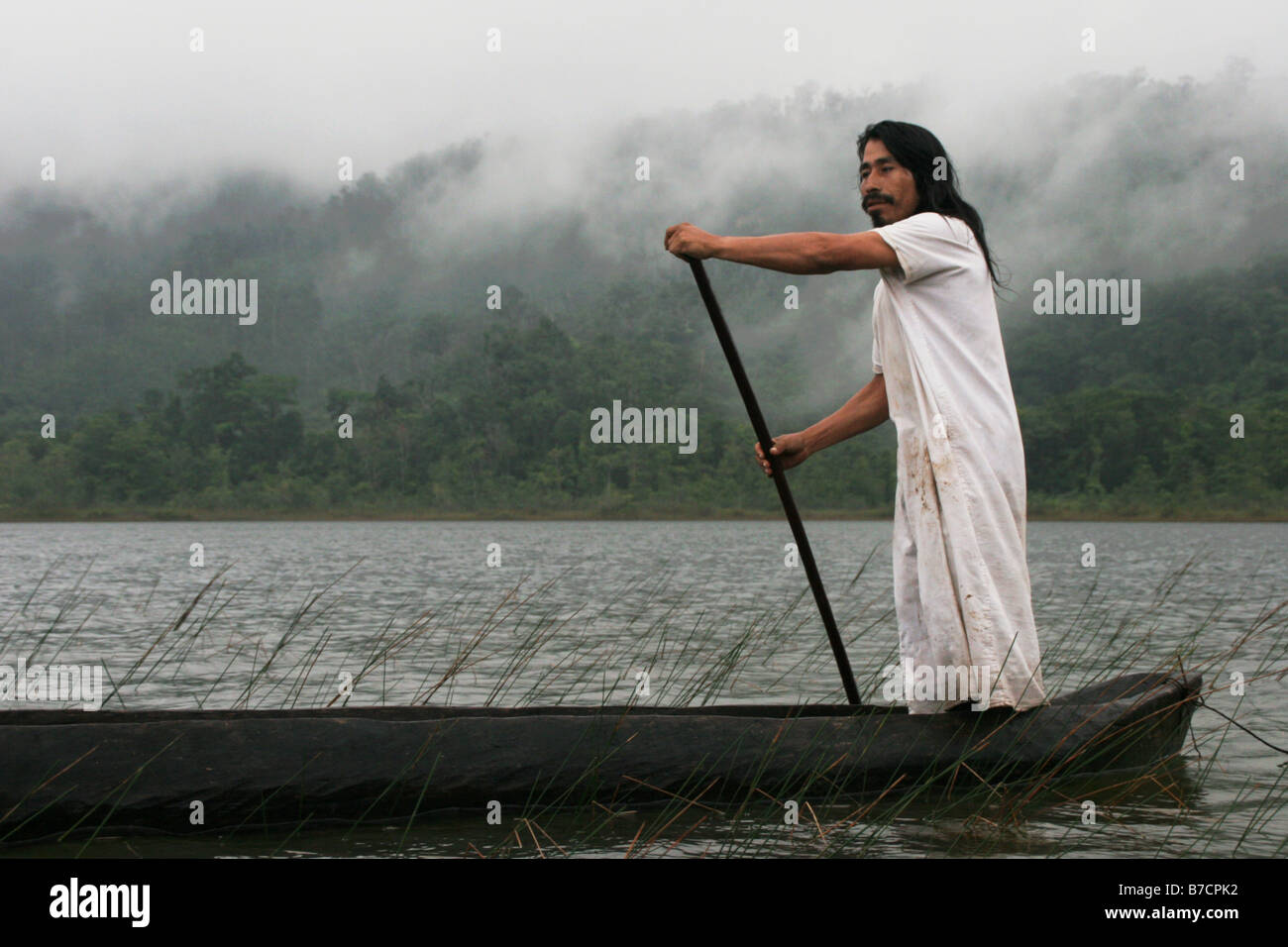 Lacandon Indian in boat with white robe in the lagoon at Naha in the Lacandon jungle in Chiapas, Mexico, Chiapas, Lacandonen-U Stock Photohttps://www.alamy.com/image-license-details/?v=1https://www.alamy.com/stock-photo-lacandon-indian-in-boat-with-white-robe-in-the-lagoon-at-naha-in-the-21794166.html
Lacandon Indian in boat with white robe in the lagoon at Naha in the Lacandon jungle in Chiapas, Mexico, Chiapas, Lacandonen-U Stock Photohttps://www.alamy.com/image-license-details/?v=1https://www.alamy.com/stock-photo-lacandon-indian-in-boat-with-white-robe-in-the-lagoon-at-naha-in-the-21794166.htmlRMB7CPK2–Lacandon Indian in boat with white robe in the lagoon at Naha in the Lacandon jungle in Chiapas, Mexico, Chiapas, Lacandonen-U
 Tribal children, Lacandon boys, typical white shirts, last descendants of Maya, ancient Maya archaeological site, Bonampak Stock Photohttps://www.alamy.com/image-license-details/?v=1https://www.alamy.com/stock-photo-tribal-children-lacandon-boys-typical-white-shirts-last-descendants-129432519.html
Tribal children, Lacandon boys, typical white shirts, last descendants of Maya, ancient Maya archaeological site, Bonampak Stock Photohttps://www.alamy.com/image-license-details/?v=1https://www.alamy.com/stock-photo-tribal-children-lacandon-boys-typical-white-shirts-last-descendants-129432519.htmlRMHEG4DY–Tribal children, Lacandon boys, typical white shirts, last descendants of Maya, ancient Maya archaeological site, Bonampak
 Little boy of the Lacandon Maya in the rainforest of Chiapas, last descendants of the Maya, Mexico, North America Stock Photohttps://www.alamy.com/image-license-details/?v=1https://www.alamy.com/little-boy-of-the-lacandon-maya-in-the-rainforest-of-chiapas-last-image60862276.html
Little boy of the Lacandon Maya in the rainforest of Chiapas, last descendants of the Maya, Mexico, North America Stock Photohttps://www.alamy.com/image-license-details/?v=1https://www.alamy.com/little-boy-of-the-lacandon-maya-in-the-rainforest-of-chiapas-last-image60862276.htmlRMDF0ECM–Little boy of the Lacandon Maya in the rainforest of Chiapas, last descendants of the Maya, Mexico, North America
 Mexico, Chiapas, Yaxchilan, Lacandon at the top of the great acropolis, the Lacandons, the last descendants of the Maya live near Yaxchilan the Mayan royal city of the end of 600 BC. The Mexican government gave to the Lacandons in 1972 a territory of 662,000 hectares around Yaxchilan and Bonampak. In Maya the Lacandons are called Hach Vinik the real men, always dressed in a white tunic they live in a very reduced community in the state of Chapias Stock Photohttps://www.alamy.com/image-license-details/?v=1https://www.alamy.com/stock-photo-mexico-chiapas-yaxchilan-lacandon-at-the-top-of-the-great-acropolis-136310050.html
Mexico, Chiapas, Yaxchilan, Lacandon at the top of the great acropolis, the Lacandons, the last descendants of the Maya live near Yaxchilan the Mayan royal city of the end of 600 BC. The Mexican government gave to the Lacandons in 1972 a territory of 662,000 hectares around Yaxchilan and Bonampak. In Maya the Lacandons are called Hach Vinik the real men, always dressed in a white tunic they live in a very reduced community in the state of Chapias Stock Photohttps://www.alamy.com/image-license-details/?v=1https://www.alamy.com/stock-photo-mexico-chiapas-yaxchilan-lacandon-at-the-top-of-the-great-acropolis-136310050.htmlRFHWNCT2–Mexico, Chiapas, Yaxchilan, Lacandon at the top of the great acropolis, the Lacandons, the last descendants of the Maya live near Yaxchilan the Mayan royal city of the end of 600 BC. The Mexican government gave to the Lacandons in 1972 a territory of 662,000 hectares around Yaxchilan and Bonampak. In Maya the Lacandons are called Hach Vinik the real men, always dressed in a white tunic they live in a very reduced community in the state of Chapias
 Members of the Otomí community in the occupation of the National Institute of Indigenous Peoples in Mexico City, during cake cutting and celebrations to mark the 37th anniversary of the Zapatista Army of National Liberation (EZLN) in Mexico. The origins of the EZLN go back to the early years of the 1980s, when a small guerrilla group made up of mestizos and indigenous peoples settled in the mountainous area of the Lacandon Jungle, in Chiapas, with the intention of creating a front that would promote the struggle armed in the country. (Photo by Gerardo Vieyra/NurPhoto) Stock Photohttps://www.alamy.com/image-license-details/?v=1https://www.alamy.com/members-of-the-otom-community-in-the-occupation-of-the-national-institute-of-indigenous-peoples-in-mexico-city-during-cake-cutting-and-celebrations-to-mark-the-37th-anniversary-of-the-zapatista-army-of-national-liberation-ezln-in-mexico-the-origins-of-the-ezln-go-back-to-the-early-years-of-the-1980s-when-a-small-guerrilla-group-made-up-of-mestizos-and-indigenous-peoples-settled-in-the-mountainous-area-of-the-lacandon-jungle-in-chiapas-with-the-intention-of-creating-a-front-that-would-promote-the-struggle-armed-in-the-country-photo-by-gerardo-vieyranurphoto-image489359542.html
Members of the Otomí community in the occupation of the National Institute of Indigenous Peoples in Mexico City, during cake cutting and celebrations to mark the 37th anniversary of the Zapatista Army of National Liberation (EZLN) in Mexico. The origins of the EZLN go back to the early years of the 1980s, when a small guerrilla group made up of mestizos and indigenous peoples settled in the mountainous area of the Lacandon Jungle, in Chiapas, with the intention of creating a front that would promote the struggle armed in the country. (Photo by Gerardo Vieyra/NurPhoto) Stock Photohttps://www.alamy.com/image-license-details/?v=1https://www.alamy.com/members-of-the-otom-community-in-the-occupation-of-the-national-institute-of-indigenous-peoples-in-mexico-city-during-cake-cutting-and-celebrations-to-mark-the-37th-anniversary-of-the-zapatista-army-of-national-liberation-ezln-in-mexico-the-origins-of-the-ezln-go-back-to-the-early-years-of-the-1980s-when-a-small-guerrilla-group-made-up-of-mestizos-and-indigenous-peoples-settled-in-the-mountainous-area-of-the-lacandon-jungle-in-chiapas-with-the-intention-of-creating-a-front-that-would-promote-the-struggle-armed-in-the-country-photo-by-gerardo-vieyranurphoto-image489359542.htmlRM2KC472E–Members of the Otomí community in the occupation of the National Institute of Indigenous Peoples in Mexico City, during cake cutting and celebrations to mark the 37th anniversary of the Zapatista Army of National Liberation (EZLN) in Mexico. The origins of the EZLN go back to the early years of the 1980s, when a small guerrilla group made up of mestizos and indigenous peoples settled in the mountainous area of the Lacandon Jungle, in Chiapas, with the intention of creating a front that would promote the struggle armed in the country. (Photo by Gerardo Vieyra/NurPhoto)
 Mexico, Chiapas, Naha, Selva Lacandona, North America. Lacandon Maya jungle guide. Stock Photohttps://www.alamy.com/image-license-details/?v=1https://www.alamy.com/mexico-chiapas-naha-selva-lacandona-north-america-lacandon-maya-jungle-image4039909.html
Mexico, Chiapas, Naha, Selva Lacandona, North America. Lacandon Maya jungle guide. Stock Photohttps://www.alamy.com/image-license-details/?v=1https://www.alamy.com/mexico-chiapas-naha-selva-lacandona-north-america-lacandon-maya-jungle-image4039909.htmlRMA9HTE6–Mexico, Chiapas, Naha, Selva Lacandona, North America. Lacandon Maya jungle guide.
 Panoramic view of Agua Azul waterfalls in Mexico - may 2 2024. High quality photo Stock Photohttps://www.alamy.com/image-license-details/?v=1https://www.alamy.com/panoramic-view-of-agua-azul-waterfalls-in-mexico-may-2-2024-high-quality-photo-image616555030.html
Panoramic view of Agua Azul waterfalls in Mexico - may 2 2024. High quality photo Stock Photohttps://www.alamy.com/image-license-details/?v=1https://www.alamy.com/panoramic-view-of-agua-azul-waterfalls-in-mexico-may-2-2024-high-quality-photo-image616555030.htmlRF2XR2E6E–Panoramic view of Agua Azul waterfalls in Mexico - may 2 2024. High quality photo
 Lacandon Indian women rolling cigars in their hut in Naha in the Lacandon jungle in Chiapas, Mexico, Chiapas, Lacandonen-Urwald Stock Photohttps://www.alamy.com/image-license-details/?v=1https://www.alamy.com/stock-photo-lacandon-indian-women-rolling-cigars-in-their-hut-in-naha-in-the-lacandon-21794194.html
Lacandon Indian women rolling cigars in their hut in Naha in the Lacandon jungle in Chiapas, Mexico, Chiapas, Lacandonen-Urwald Stock Photohttps://www.alamy.com/image-license-details/?v=1https://www.alamy.com/stock-photo-lacandon-indian-women-rolling-cigars-in-their-hut-in-naha-in-the-lacandon-21794194.htmlRMB7CPM2–Lacandon Indian women rolling cigars in their hut in Naha in the Lacandon jungle in Chiapas, Mexico, Chiapas, Lacandonen-Urwald
 Child of the Lacandon Maya in the rainforest of Chiapas, last descendants of the Maya, Mexico, North America Stock Photohttps://www.alamy.com/image-license-details/?v=1https://www.alamy.com/stock-photo-child-of-the-lacandon-maya-in-the-rainforest-of-chiapas-last-descendants-34500804.html
Child of the Lacandon Maya in the rainforest of Chiapas, last descendants of the Maya, Mexico, North America Stock Photohttps://www.alamy.com/image-license-details/?v=1https://www.alamy.com/stock-photo-child-of-the-lacandon-maya-in-the-rainforest-of-chiapas-last-descendants-34500804.htmlRMC03J3G–Child of the Lacandon Maya in the rainforest of Chiapas, last descendants of the Maya, Mexico, North America
 Mexico, Chiapas, Yaxchilan, Lacandon at the top of the great acropolis, the Lacandons, the last descendants of the Maya live near Yaxchilan the Mayan royal city of the end of 600 BC. The Mexican government gave to the Lacandons in 1972 a territory of 662,000 hectares around Yaxchilan and Bonampak. In Maya the Lacandons are called Hach Vinik the real men, always dressed in a white tunic they live in a very reduced community in the state of Chapias Stock Photohttps://www.alamy.com/image-license-details/?v=1https://www.alamy.com/stock-photo-mexico-chiapas-yaxchilan-lacandon-at-the-top-of-the-great-acropolis-136310072.html
Mexico, Chiapas, Yaxchilan, Lacandon at the top of the great acropolis, the Lacandons, the last descendants of the Maya live near Yaxchilan the Mayan royal city of the end of 600 BC. The Mexican government gave to the Lacandons in 1972 a territory of 662,000 hectares around Yaxchilan and Bonampak. In Maya the Lacandons are called Hach Vinik the real men, always dressed in a white tunic they live in a very reduced community in the state of Chapias Stock Photohttps://www.alamy.com/image-license-details/?v=1https://www.alamy.com/stock-photo-mexico-chiapas-yaxchilan-lacandon-at-the-top-of-the-great-acropolis-136310072.htmlRFHWNCTT–Mexico, Chiapas, Yaxchilan, Lacandon at the top of the great acropolis, the Lacandons, the last descendants of the Maya live near Yaxchilan the Mayan royal city of the end of 600 BC. The Mexican government gave to the Lacandons in 1972 a territory of 662,000 hectares around Yaxchilan and Bonampak. In Maya the Lacandons are called Hach Vinik the real men, always dressed in a white tunic they live in a very reduced community in the state of Chapias
 Members of the Otomí community in the occupation of the National Institute of Indigenous Peoples in Mexico City, during cake cutting and celebrations to mark the 37th anniversary of the Zapatista Army of National Liberation (EZLN) in Mexico. The origins of the EZLN go back to the early years of the 1980s, when a small guerrilla group made up of mestizos and indigenous peoples settled in the mountainous area of the Lacandon Jungle, in Chiapas, with the intention of creating a front that would promote the struggle armed in the country. (Photo by Gerardo Vieyra/NurPhoto) Stock Photohttps://www.alamy.com/image-license-details/?v=1https://www.alamy.com/members-of-the-otom-community-in-the-occupation-of-the-national-institute-of-indigenous-peoples-in-mexico-city-during-cake-cutting-and-celebrations-to-mark-the-37th-anniversary-of-the-zapatista-army-of-national-liberation-ezln-in-mexico-the-origins-of-the-ezln-go-back-to-the-early-years-of-the-1980s-when-a-small-guerrilla-group-made-up-of-mestizos-and-indigenous-peoples-settled-in-the-mountainous-area-of-the-lacandon-jungle-in-chiapas-with-the-intention-of-creating-a-front-that-would-promote-the-struggle-armed-in-the-country-photo-by-gerardo-vieyranurphoto-image489359540.html
Members of the Otomí community in the occupation of the National Institute of Indigenous Peoples in Mexico City, during cake cutting and celebrations to mark the 37th anniversary of the Zapatista Army of National Liberation (EZLN) in Mexico. The origins of the EZLN go back to the early years of the 1980s, when a small guerrilla group made up of mestizos and indigenous peoples settled in the mountainous area of the Lacandon Jungle, in Chiapas, with the intention of creating a front that would promote the struggle armed in the country. (Photo by Gerardo Vieyra/NurPhoto) Stock Photohttps://www.alamy.com/image-license-details/?v=1https://www.alamy.com/members-of-the-otom-community-in-the-occupation-of-the-national-institute-of-indigenous-peoples-in-mexico-city-during-cake-cutting-and-celebrations-to-mark-the-37th-anniversary-of-the-zapatista-army-of-national-liberation-ezln-in-mexico-the-origins-of-the-ezln-go-back-to-the-early-years-of-the-1980s-when-a-small-guerrilla-group-made-up-of-mestizos-and-indigenous-peoples-settled-in-the-mountainous-area-of-the-lacandon-jungle-in-chiapas-with-the-intention-of-creating-a-front-that-would-promote-the-struggle-armed-in-the-country-photo-by-gerardo-vieyranurphoto-image489359540.htmlRM2KC472C–Members of the Otomí community in the occupation of the National Institute of Indigenous Peoples in Mexico City, during cake cutting and celebrations to mark the 37th anniversary of the Zapatista Army of National Liberation (EZLN) in Mexico. The origins of the EZLN go back to the early years of the 1980s, when a small guerrilla group made up of mestizos and indigenous peoples settled in the mountainous area of the Lacandon Jungle, in Chiapas, with the intention of creating a front that would promote the struggle armed in the country. (Photo by Gerardo Vieyra/NurPhoto)
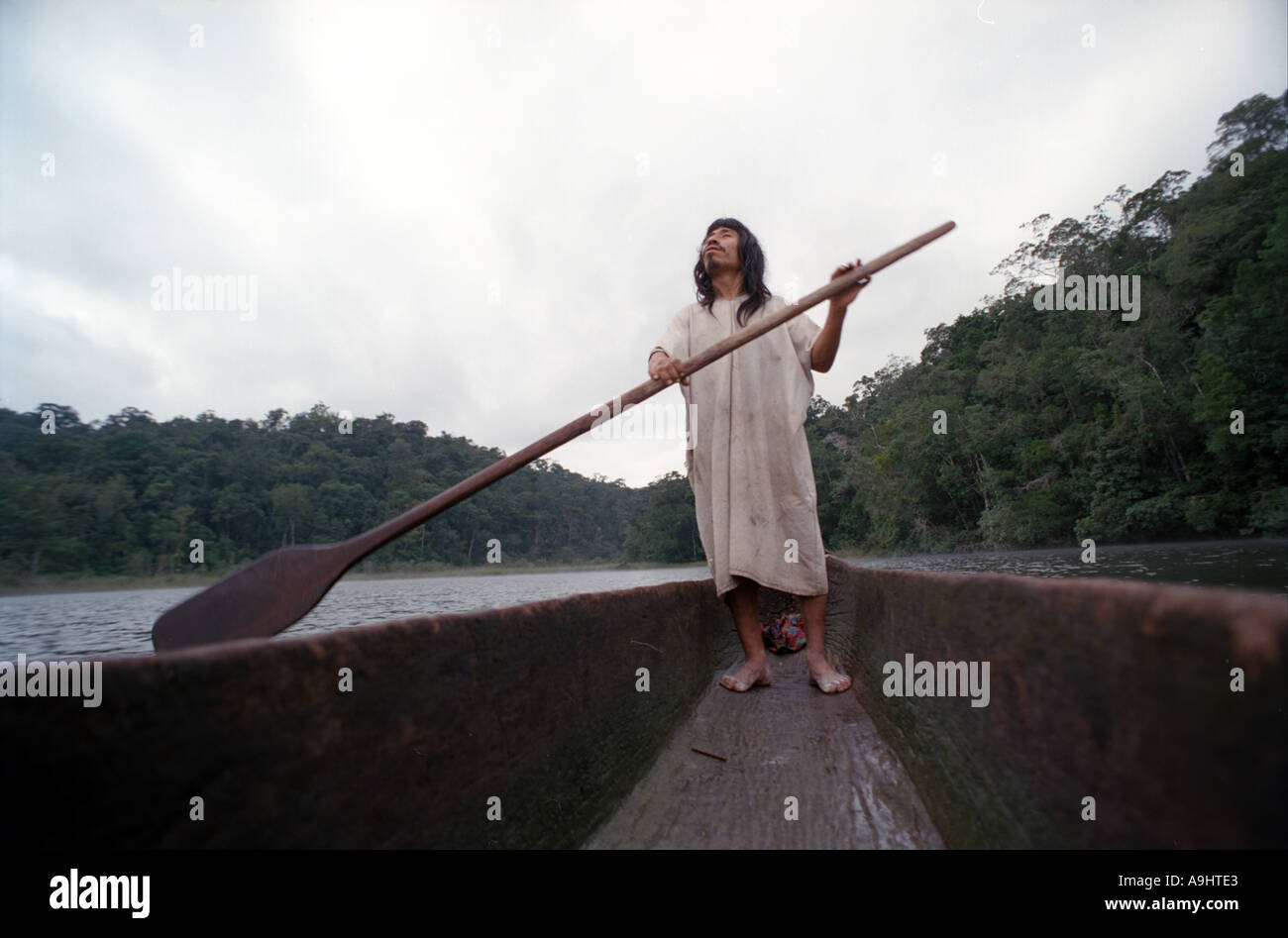 Mexico, Chiapas, Naha, Selva Lacandona, North America. Lacandon Maya jungle guide. Stock Photohttps://www.alamy.com/image-license-details/?v=1https://www.alamy.com/mexico-chiapas-naha-selva-lacandona-north-america-lacandon-maya-jungle-image4039906.html
Mexico, Chiapas, Naha, Selva Lacandona, North America. Lacandon Maya jungle guide. Stock Photohttps://www.alamy.com/image-license-details/?v=1https://www.alamy.com/mexico-chiapas-naha-selva-lacandona-north-america-lacandon-maya-jungle-image4039906.htmlRMA9HTE3–Mexico, Chiapas, Naha, Selva Lacandona, North America. Lacandon Maya jungle guide.
 Panoramic view of Agua Azul waterfalls in Mexico - may 2 2024. High quality photo Stock Photohttps://www.alamy.com/image-license-details/?v=1https://www.alamy.com/panoramic-view-of-agua-azul-waterfalls-in-mexico-may-2-2024-high-quality-photo-image616554516.html
Panoramic view of Agua Azul waterfalls in Mexico - may 2 2024. High quality photo Stock Photohttps://www.alamy.com/image-license-details/?v=1https://www.alamy.com/panoramic-view-of-agua-azul-waterfalls-in-mexico-may-2-2024-high-quality-photo-image616554516.htmlRF2XR2DG4–Panoramic view of Agua Azul waterfalls in Mexico - may 2 2024. High quality photo
 Mexico, Chiapas, Lacandon Jungle. Tzeltal Indian and his shade-grown coffee Stock Photohttps://www.alamy.com/image-license-details/?v=1https://www.alamy.com/mexico-chiapas-lacandon-jungle-tzeltal-indian-and-his-shade-grown-image3858192.html
Mexico, Chiapas, Lacandon Jungle. Tzeltal Indian and his shade-grown coffee Stock Photohttps://www.alamy.com/image-license-details/?v=1https://www.alamy.com/mexico-chiapas-lacandon-jungle-tzeltal-indian-and-his-shade-grown-image3858192.htmlRMA7ER11–Mexico, Chiapas, Lacandon Jungle. Tzeltal Indian and his shade-grown coffee
 Mexico, Chiapas, Naha, Selva Lacandona, North America. Lacandon Indian family. Stock Photohttps://www.alamy.com/image-license-details/?v=1https://www.alamy.com/mexico-chiapas-naha-selva-lacandona-north-america-lacandon-indian-image4039913.html
Mexico, Chiapas, Naha, Selva Lacandona, North America. Lacandon Indian family. Stock Photohttps://www.alamy.com/image-license-details/?v=1https://www.alamy.com/mexico-chiapas-naha-selva-lacandona-north-america-lacandon-indian-image4039913.htmlRMA9HTEA–Mexico, Chiapas, Naha, Selva Lacandona, North America. Lacandon Indian family.
 Child of the Lacandon Maya in the rainforest of Chiapas, on a boat on a lagoon, last descendants of the Maya, Mexico Stock Photohttps://www.alamy.com/image-license-details/?v=1https://www.alamy.com/stock-photo-child-of-the-lacandon-maya-in-the-rainforest-of-chiapas-on-a-boat-34500784.html
Child of the Lacandon Maya in the rainforest of Chiapas, on a boat on a lagoon, last descendants of the Maya, Mexico Stock Photohttps://www.alamy.com/image-license-details/?v=1https://www.alamy.com/stock-photo-child-of-the-lacandon-maya-in-the-rainforest-of-chiapas-on-a-boat-34500784.htmlRMC03J2T–Child of the Lacandon Maya in the rainforest of Chiapas, on a boat on a lagoon, last descendants of the Maya, Mexico
 Mexico, Chiapas, Yaxchilan, Lacandon at the top of the great acropolis, the Lacandons, the last descendants of the Maya live near Yaxchilan the Mayan royal city of the end of 600 BC. The Mexican government gave to the Lacandons in 1972 a territory of 662,000 hectares around Yaxchilan and Bonampak. In Maya the Lacandons are called Hach Vinik the real men, always dressed in a white tunic they live in a very reduced community in the state of Chapias Stock Photohttps://www.alamy.com/image-license-details/?v=1https://www.alamy.com/stock-photo-mexico-chiapas-yaxchilan-lacandon-at-the-top-of-the-great-acropolis-136310052.html
Mexico, Chiapas, Yaxchilan, Lacandon at the top of the great acropolis, the Lacandons, the last descendants of the Maya live near Yaxchilan the Mayan royal city of the end of 600 BC. The Mexican government gave to the Lacandons in 1972 a territory of 662,000 hectares around Yaxchilan and Bonampak. In Maya the Lacandons are called Hach Vinik the real men, always dressed in a white tunic they live in a very reduced community in the state of Chapias Stock Photohttps://www.alamy.com/image-license-details/?v=1https://www.alamy.com/stock-photo-mexico-chiapas-yaxchilan-lacandon-at-the-top-of-the-great-acropolis-136310052.htmlRFHWNCT4–Mexico, Chiapas, Yaxchilan, Lacandon at the top of the great acropolis, the Lacandons, the last descendants of the Maya live near Yaxchilan the Mayan royal city of the end of 600 BC. The Mexican government gave to the Lacandons in 1972 a territory of 662,000 hectares around Yaxchilan and Bonampak. In Maya the Lacandons are called Hach Vinik the real men, always dressed in a white tunic they live in a very reduced community in the state of Chapias
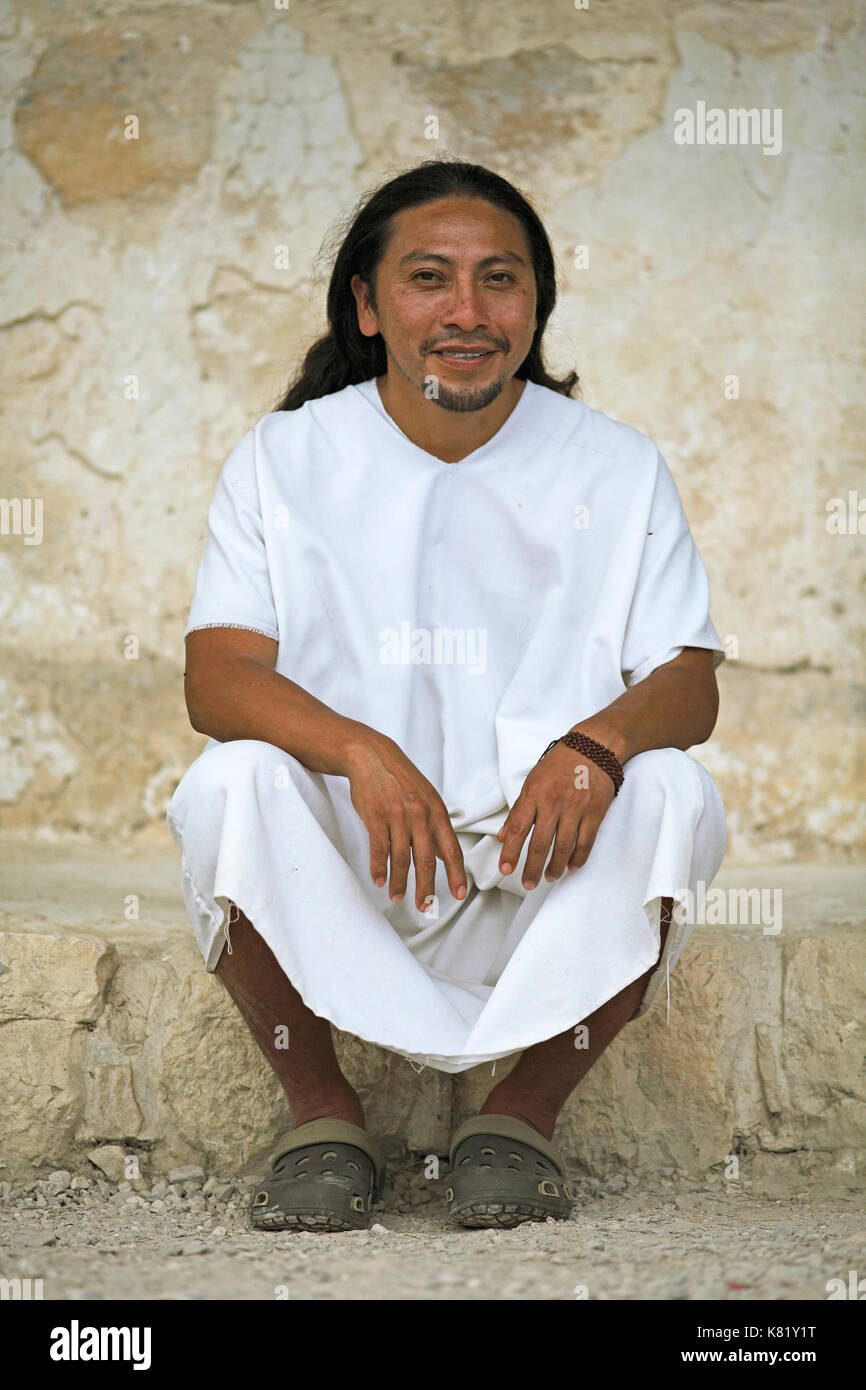 Man, 36 years old, Lacandone ethnic group, sitting at the wall, in traditional white Mayan dress for men, Selva Lacandona Stock Photohttps://www.alamy.com/image-license-details/?v=1https://www.alamy.com/man-36-years-old-lacandone-ethnic-group-sitting-at-the-wall-in-traditional-image159853732.html
Man, 36 years old, Lacandone ethnic group, sitting at the wall, in traditional white Mayan dress for men, Selva Lacandona Stock Photohttps://www.alamy.com/image-license-details/?v=1https://www.alamy.com/man-36-years-old-lacandone-ethnic-group-sitting-at-the-wall-in-traditional-image159853732.htmlRMK81Y1T–Man, 36 years old, Lacandone ethnic group, sitting at the wall, in traditional white Mayan dress for men, Selva Lacandona
 Two women from the Otomí occupation at the National Institute of Indigenous Peoples in Mexico City, during celebrations to mark the 37th anniversary of the Zapatista Army of National Liberation (EZLN) in Mexico. The origins of the EZLN go back to the early years of the 1980s, when a small guerrilla group made up of mestizos and indigenous peoples settled in the mountainous area of the Lacandon Jungle, in Chiapas, with the intention of creating a front that would promote the struggle armed in the country. (Photo by Gerardo Vieyra/NurPhoto) Stock Photohttps://www.alamy.com/image-license-details/?v=1https://www.alamy.com/two-women-from-the-otom-occupation-at-the-national-institute-of-indigenous-peoples-in-mexico-city-during-celebrations-to-mark-the-37th-anniversary-of-the-zapatista-army-of-national-liberation-ezln-in-mexico-the-origins-of-the-ezln-go-back-to-the-early-years-of-the-1980s-when-a-small-guerrilla-group-made-up-of-mestizos-and-indigenous-peoples-settled-in-the-mountainous-area-of-the-lacandon-jungle-in-chiapas-with-the-intention-of-creating-a-front-that-would-promote-the-struggle-armed-in-the-country-photo-by-gerardo-vieyranurphoto-image489359531.html
Two women from the Otomí occupation at the National Institute of Indigenous Peoples in Mexico City, during celebrations to mark the 37th anniversary of the Zapatista Army of National Liberation (EZLN) in Mexico. The origins of the EZLN go back to the early years of the 1980s, when a small guerrilla group made up of mestizos and indigenous peoples settled in the mountainous area of the Lacandon Jungle, in Chiapas, with the intention of creating a front that would promote the struggle armed in the country. (Photo by Gerardo Vieyra/NurPhoto) Stock Photohttps://www.alamy.com/image-license-details/?v=1https://www.alamy.com/two-women-from-the-otom-occupation-at-the-national-institute-of-indigenous-peoples-in-mexico-city-during-celebrations-to-mark-the-37th-anniversary-of-the-zapatista-army-of-national-liberation-ezln-in-mexico-the-origins-of-the-ezln-go-back-to-the-early-years-of-the-1980s-when-a-small-guerrilla-group-made-up-of-mestizos-and-indigenous-peoples-settled-in-the-mountainous-area-of-the-lacandon-jungle-in-chiapas-with-the-intention-of-creating-a-front-that-would-promote-the-struggle-armed-in-the-country-photo-by-gerardo-vieyranurphoto-image489359531.htmlRM2KC4723–Two women from the Otomí occupation at the National Institute of Indigenous Peoples in Mexico City, during celebrations to mark the 37th anniversary of the Zapatista Army of National Liberation (EZLN) in Mexico. The origins of the EZLN go back to the early years of the 1980s, when a small guerrilla group made up of mestizos and indigenous peoples settled in the mountainous area of the Lacandon Jungle, in Chiapas, with the intention of creating a front that would promote the struggle armed in the country. (Photo by Gerardo Vieyra/NurPhoto)
 Panoramic view of Agua Azul waterfalls in Mexico - may 2 2024. High quality photo Stock Photohttps://www.alamy.com/image-license-details/?v=1https://www.alamy.com/panoramic-view-of-agua-azul-waterfalls-in-mexico-may-2-2024-high-quality-photo-image616554631.html
Panoramic view of Agua Azul waterfalls in Mexico - may 2 2024. High quality photo Stock Photohttps://www.alamy.com/image-license-details/?v=1https://www.alamy.com/panoramic-view-of-agua-azul-waterfalls-in-mexico-may-2-2024-high-quality-photo-image616554631.htmlRF2XR2DM7–Panoramic view of Agua Azul waterfalls in Mexico - may 2 2024. High quality photo
 Mexico, Chiapas, Naha, Selva Lacandona, North America. Lacandon Maya jungle guide. Stock Photohttps://www.alamy.com/image-license-details/?v=1https://www.alamy.com/mexico-chiapas-naha-selva-lacandona-north-america-lacandon-maya-jungle-image4039902.html
Mexico, Chiapas, Naha, Selva Lacandona, North America. Lacandon Maya jungle guide. Stock Photohttps://www.alamy.com/image-license-details/?v=1https://www.alamy.com/mexico-chiapas-naha-selva-lacandona-north-america-lacandon-maya-jungle-image4039902.htmlRMA9HTDF–Mexico, Chiapas, Naha, Selva Lacandona, North America. Lacandon Maya jungle guide.
 Mexico, Chiapas, Lacandon Jungle. Tzeltal Indians cultivate 'abono verde' or green organic fertilizer Stock Photohttps://www.alamy.com/image-license-details/?v=1https://www.alamy.com/mexico-chiapas-lacandon-jungle-tzeltal-indians-cultivate-abono-verde-image3858436.html
Mexico, Chiapas, Lacandon Jungle. Tzeltal Indians cultivate 'abono verde' or green organic fertilizer Stock Photohttps://www.alamy.com/image-license-details/?v=1https://www.alamy.com/mexico-chiapas-lacandon-jungle-tzeltal-indians-cultivate-abono-verde-image3858436.htmlRMA7ET05–Mexico, Chiapas, Lacandon Jungle. Tzeltal Indians cultivate 'abono verde' or green organic fertilizer
 Mexico, Chiapas, Naha, Selva Lacandona, North America. Lacandon Maya jungle guide. Stock Photohttps://www.alamy.com/image-license-details/?v=1https://www.alamy.com/mexico-chiapas-naha-selva-lacandona-north-america-lacandon-maya-jungle-image4039903.html
Mexico, Chiapas, Naha, Selva Lacandona, North America. Lacandon Maya jungle guide. Stock Photohttps://www.alamy.com/image-license-details/?v=1https://www.alamy.com/mexico-chiapas-naha-selva-lacandona-north-america-lacandon-maya-jungle-image4039903.htmlRMA9HTE0–Mexico, Chiapas, Naha, Selva Lacandona, North America. Lacandon Maya jungle guide.
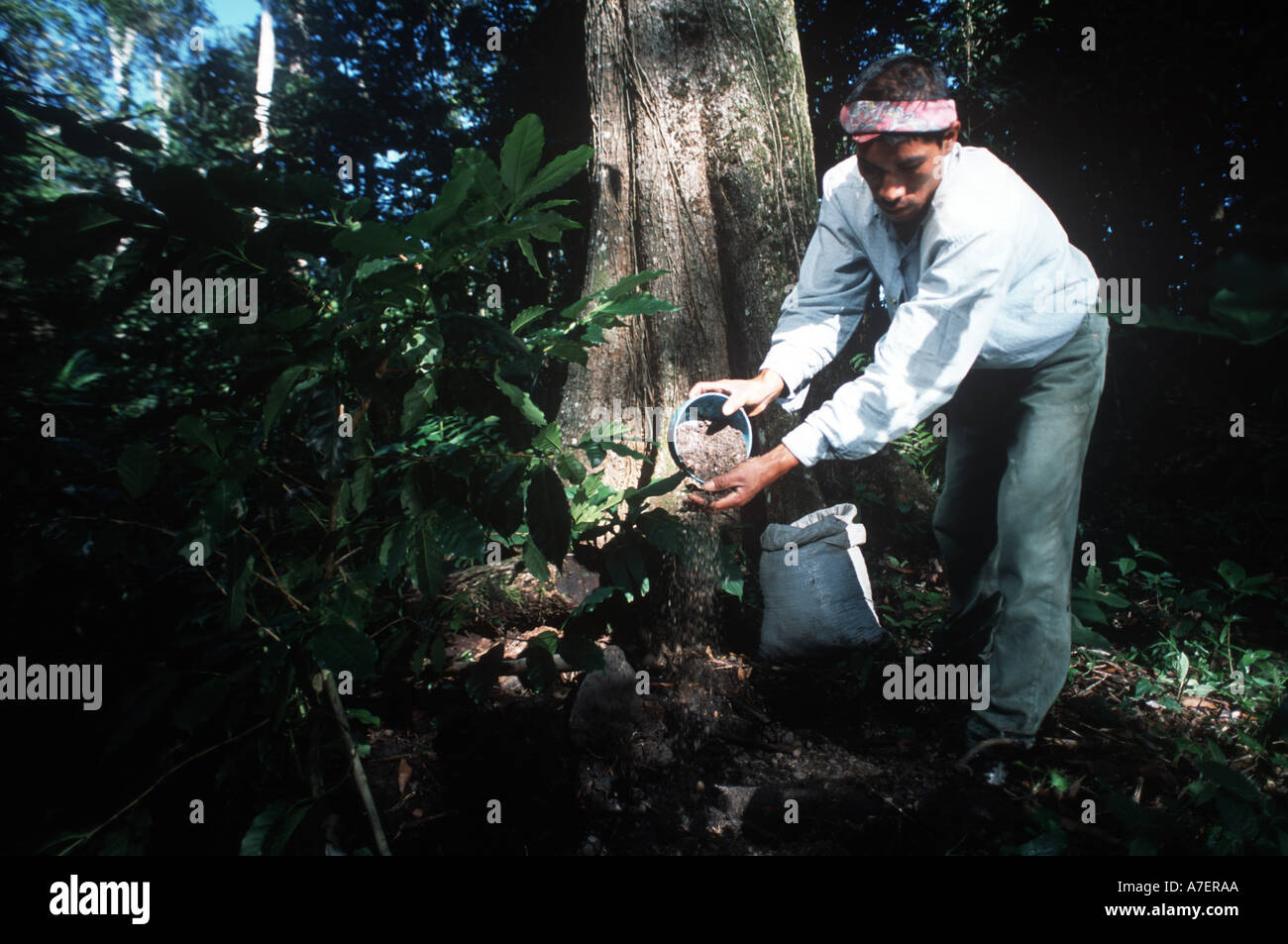 Mexico, Chiapas, Lacandon Jungle. Tzeltal Indian adds organic fertilizer to his shade-grown coffee Stock Photohttps://www.alamy.com/image-license-details/?v=1https://www.alamy.com/mexico-chiapas-lacandon-jungle-tzeltal-indian-adds-organic-fertilizer-image3858345.html
Mexico, Chiapas, Lacandon Jungle. Tzeltal Indian adds organic fertilizer to his shade-grown coffee Stock Photohttps://www.alamy.com/image-license-details/?v=1https://www.alamy.com/mexico-chiapas-lacandon-jungle-tzeltal-indian-adds-organic-fertilizer-image3858345.htmlRMA7ERAA–Mexico, Chiapas, Lacandon Jungle. Tzeltal Indian adds organic fertilizer to his shade-grown coffee
 Mexico, Chiapas, Yaxchilan, Lacandon at the top of the great acropolis, the Lacandons, the last descendants of the Maya live near Yaxchilan the Mayan royal city of the end of 600 BC. The Mexican government gave to the Lacandons in 1972 a territory of 662,000 hectares around Yaxchilan and Bonampak. In Maya the Lacandons are called Hach Vinik the real men, always dressed in a white tunic they live in a very reduced community in the state of Chapias Stock Photohttps://www.alamy.com/image-license-details/?v=1https://www.alamy.com/stock-photo-mexico-chiapas-yaxchilan-lacandon-at-the-top-of-the-great-acropolis-136310049.html
Mexico, Chiapas, Yaxchilan, Lacandon at the top of the great acropolis, the Lacandons, the last descendants of the Maya live near Yaxchilan the Mayan royal city of the end of 600 BC. The Mexican government gave to the Lacandons in 1972 a territory of 662,000 hectares around Yaxchilan and Bonampak. In Maya the Lacandons are called Hach Vinik the real men, always dressed in a white tunic they live in a very reduced community in the state of Chapias Stock Photohttps://www.alamy.com/image-license-details/?v=1https://www.alamy.com/stock-photo-mexico-chiapas-yaxchilan-lacandon-at-the-top-of-the-great-acropolis-136310049.htmlRFHWNCT1–Mexico, Chiapas, Yaxchilan, Lacandon at the top of the great acropolis, the Lacandons, the last descendants of the Maya live near Yaxchilan the Mayan royal city of the end of 600 BC. The Mexican government gave to the Lacandons in 1972 a territory of 662,000 hectares around Yaxchilan and Bonampak. In Maya the Lacandons are called Hach Vinik the real men, always dressed in a white tunic they live in a very reduced community in the state of Chapias
 Mexico, Chiapas, Yaxchilan, Lacandon praying before the great acropolis, the Lacandons, the last descendants of the Maya live near Yaxchilan the Mayan royal city of the end of 600 BC. The Mexican government gave to the Lacandons in 1972 a territory of 662,000 hectares around Yaxchilan and Bonampak. In Maya the Lacandons are called Hach Vinik the real men, always dressed in a white tunic they live in a very reduced community in the state of Chapias Stock Photohttps://www.alamy.com/image-license-details/?v=1https://www.alamy.com/stock-photo-mexico-chiapas-yaxchilan-lacandon-praying-before-the-great-acropolis-136310051.html
Mexico, Chiapas, Yaxchilan, Lacandon praying before the great acropolis, the Lacandons, the last descendants of the Maya live near Yaxchilan the Mayan royal city of the end of 600 BC. The Mexican government gave to the Lacandons in 1972 a territory of 662,000 hectares around Yaxchilan and Bonampak. In Maya the Lacandons are called Hach Vinik the real men, always dressed in a white tunic they live in a very reduced community in the state of Chapias Stock Photohttps://www.alamy.com/image-license-details/?v=1https://www.alamy.com/stock-photo-mexico-chiapas-yaxchilan-lacandon-praying-before-the-great-acropolis-136310051.htmlRFHWNCT3–Mexico, Chiapas, Yaxchilan, Lacandon praying before the great acropolis, the Lacandons, the last descendants of the Maya live near Yaxchilan the Mayan royal city of the end of 600 BC. The Mexican government gave to the Lacandons in 1972 a territory of 662,000 hectares around Yaxchilan and Bonampak. In Maya the Lacandons are called Hach Vinik the real men, always dressed in a white tunic they live in a very reduced community in the state of Chapias
 A member of the Otomí occupation at the National Institute of Indigenous Peoples in Mexico City, paints a picture on the occasion of the 37th anniversary of the Zapatista Army of National Liberation (EZLN) in Mexico. The origins of the EZLN go back to the early years of the 1980s, when a small guerrilla group made up of mestizos and indigenous peoples settled in the mountainous area of the Lacandon Jungle, in Chiapas, with the intention of creating a front that would promote the struggle armed in the country. (Photo by Gerardo Vieyra/NurPhoto) Stock Photohttps://www.alamy.com/image-license-details/?v=1https://www.alamy.com/a-member-of-the-otom-occupation-at-the-national-institute-of-indigenous-peoples-in-mexico-city-paints-a-picture-on-the-occasion-of-the-37th-anniversary-of-the-zapatista-army-of-national-liberation-ezln-in-mexico-the-origins-of-the-ezln-go-back-to-the-early-years-of-the-1980s-when-a-small-guerrilla-group-made-up-of-mestizos-and-indigenous-peoples-settled-in-the-mountainous-area-of-the-lacandon-jungle-in-chiapas-with-the-intention-of-creating-a-front-that-would-promote-the-struggle-armed-in-the-country-photo-by-gerardo-vieyranurphoto-image489359528.html
A member of the Otomí occupation at the National Institute of Indigenous Peoples in Mexico City, paints a picture on the occasion of the 37th anniversary of the Zapatista Army of National Liberation (EZLN) in Mexico. The origins of the EZLN go back to the early years of the 1980s, when a small guerrilla group made up of mestizos and indigenous peoples settled in the mountainous area of the Lacandon Jungle, in Chiapas, with the intention of creating a front that would promote the struggle armed in the country. (Photo by Gerardo Vieyra/NurPhoto) Stock Photohttps://www.alamy.com/image-license-details/?v=1https://www.alamy.com/a-member-of-the-otom-occupation-at-the-national-institute-of-indigenous-peoples-in-mexico-city-paints-a-picture-on-the-occasion-of-the-37th-anniversary-of-the-zapatista-army-of-national-liberation-ezln-in-mexico-the-origins-of-the-ezln-go-back-to-the-early-years-of-the-1980s-when-a-small-guerrilla-group-made-up-of-mestizos-and-indigenous-peoples-settled-in-the-mountainous-area-of-the-lacandon-jungle-in-chiapas-with-the-intention-of-creating-a-front-that-would-promote-the-struggle-armed-in-the-country-photo-by-gerardo-vieyranurphoto-image489359528.htmlRM2KC4720–A member of the Otomí occupation at the National Institute of Indigenous Peoples in Mexico City, paints a picture on the occasion of the 37th anniversary of the Zapatista Army of National Liberation (EZLN) in Mexico. The origins of the EZLN go back to the early years of the 1980s, when a small guerrilla group made up of mestizos and indigenous peoples settled in the mountainous area of the Lacandon Jungle, in Chiapas, with the intention of creating a front that would promote the struggle armed in the country. (Photo by Gerardo Vieyra/NurPhoto)
 Panoramic view of Agua Azul waterfalls in Mexico - may 2 2024. High quality photo Stock Photohttps://www.alamy.com/image-license-details/?v=1https://www.alamy.com/panoramic-view-of-agua-azul-waterfalls-in-mexico-may-2-2024-high-quality-photo-image616554312.html
Panoramic view of Agua Azul waterfalls in Mexico - may 2 2024. High quality photo Stock Photohttps://www.alamy.com/image-license-details/?v=1https://www.alamy.com/panoramic-view-of-agua-azul-waterfalls-in-mexico-may-2-2024-high-quality-photo-image616554312.htmlRF2XR2D8T–Panoramic view of Agua Azul waterfalls in Mexico - may 2 2024. High quality photo
 Mexico, Chiapas, Lacandon Jungle. Tzeltal Indians cultivate 'abono verde' or green organic fertilizer Stock Photohttps://www.alamy.com/image-license-details/?v=1https://www.alamy.com/mexico-chiapas-lacandon-jungle-tzeltal-indians-cultivate-abono-verde-image3858452.html
Mexico, Chiapas, Lacandon Jungle. Tzeltal Indians cultivate 'abono verde' or green organic fertilizer Stock Photohttps://www.alamy.com/image-license-details/?v=1https://www.alamy.com/mexico-chiapas-lacandon-jungle-tzeltal-indians-cultivate-abono-verde-image3858452.htmlRMA7ET15–Mexico, Chiapas, Lacandon Jungle. Tzeltal Indians cultivate 'abono verde' or green organic fertilizer
 Two passersby walk outside the Otomi occupation at the National Institute of Indigenous Peoples in Mexico City, on the occasion of the 37th anniversary of the Zapatista Army of National Liberation (EZLN) in Mexico. The origins of the EZLN go back to the early years of the 1980s, when a small guerrilla group made up of mestizos and indigenous peoples settled in the mountainous area of the Lacandon Jungle, in Chiapas, with the intention of creating a front that would promote the struggle armed in the country. (Photo by Gerardo Vieyra/NurPhoto) Stock Photohttps://www.alamy.com/image-license-details/?v=1https://www.alamy.com/two-passersby-walk-outside-the-otomi-occupation-at-the-national-institute-of-indigenous-peoples-in-mexico-city-on-the-occasion-of-the-37th-anniversary-of-the-zapatista-army-of-national-liberation-ezln-in-mexico-the-origins-of-the-ezln-go-back-to-the-early-years-of-the-1980s-when-a-small-guerrilla-group-made-up-of-mestizos-and-indigenous-peoples-settled-in-the-mountainous-area-of-the-lacandon-jungle-in-chiapas-with-the-intention-of-creating-a-front-that-would-promote-the-struggle-armed-in-the-country-photo-by-gerardo-vieyranurphoto-image489359534.html
Two passersby walk outside the Otomi occupation at the National Institute of Indigenous Peoples in Mexico City, on the occasion of the 37th anniversary of the Zapatista Army of National Liberation (EZLN) in Mexico. The origins of the EZLN go back to the early years of the 1980s, when a small guerrilla group made up of mestizos and indigenous peoples settled in the mountainous area of the Lacandon Jungle, in Chiapas, with the intention of creating a front that would promote the struggle armed in the country. (Photo by Gerardo Vieyra/NurPhoto) Stock Photohttps://www.alamy.com/image-license-details/?v=1https://www.alamy.com/two-passersby-walk-outside-the-otomi-occupation-at-the-national-institute-of-indigenous-peoples-in-mexico-city-on-the-occasion-of-the-37th-anniversary-of-the-zapatista-army-of-national-liberation-ezln-in-mexico-the-origins-of-the-ezln-go-back-to-the-early-years-of-the-1980s-when-a-small-guerrilla-group-made-up-of-mestizos-and-indigenous-peoples-settled-in-the-mountainous-area-of-the-lacandon-jungle-in-chiapas-with-the-intention-of-creating-a-front-that-would-promote-the-struggle-armed-in-the-country-photo-by-gerardo-vieyranurphoto-image489359534.htmlRM2KC4726–Two passersby walk outside the Otomi occupation at the National Institute of Indigenous Peoples in Mexico City, on the occasion of the 37th anniversary of the Zapatista Army of National Liberation (EZLN) in Mexico. The origins of the EZLN go back to the early years of the 1980s, when a small guerrilla group made up of mestizos and indigenous peoples settled in the mountainous area of the Lacandon Jungle, in Chiapas, with the intention of creating a front that would promote the struggle armed in the country. (Photo by Gerardo Vieyra/NurPhoto)
 Panoramic view of Agua Azul waterfalls in Mexico - may 2 2024. High quality photo Stock Photohttps://www.alamy.com/image-license-details/?v=1https://www.alamy.com/panoramic-view-of-agua-azul-waterfalls-in-mexico-may-2-2024-high-quality-photo-image616554911.html
Panoramic view of Agua Azul waterfalls in Mexico - may 2 2024. High quality photo Stock Photohttps://www.alamy.com/image-license-details/?v=1https://www.alamy.com/panoramic-view-of-agua-azul-waterfalls-in-mexico-may-2-2024-high-quality-photo-image616554911.htmlRF2XR2E27–Panoramic view of Agua Azul waterfalls in Mexico - may 2 2024. High quality photo
 Mexico, Chiapas, Lacandon Jungle. Tzeltal Indian adds organic fertilizer to his shade-grown coffee Stock Photohttps://www.alamy.com/image-license-details/?v=1https://www.alamy.com/mexico-chiapas-lacandon-jungle-tzeltal-indian-adds-organic-fertilizer-image3858288.html
Mexico, Chiapas, Lacandon Jungle. Tzeltal Indian adds organic fertilizer to his shade-grown coffee Stock Photohttps://www.alamy.com/image-license-details/?v=1https://www.alamy.com/mexico-chiapas-lacandon-jungle-tzeltal-indian-adds-organic-fertilizer-image3858288.htmlRMA7ER71–Mexico, Chiapas, Lacandon Jungle. Tzeltal Indian adds organic fertilizer to his shade-grown coffee
 Members of the Otomí community in the occupation of the National Institute of Indigenous Peoples in Mexico City, during a speech and celebrations on the occasion of the 37th anniversary of the Zapatista Army of National Liberation (EZLN) in Mexico. The origins of the EZLN go back to the early years of the 1980s, when a small guerrilla group made up of mestizos and indigenous peoples settled in the mountainous area of the Lacandon Jungle, in Chiapas, with the intention of creating a front that would promote the struggle armed in the country. (Photo by Gerardo Vieyra/NurPhoto) Stock Photohttps://www.alamy.com/image-license-details/?v=1https://www.alamy.com/members-of-the-otom-community-in-the-occupation-of-the-national-institute-of-indigenous-peoples-in-mexico-city-during-a-speech-and-celebrations-on-the-occasion-of-the-37th-anniversary-of-the-zapatista-army-of-national-liberation-ezln-in-mexico-the-origins-of-the-ezln-go-back-to-the-early-years-of-the-1980s-when-a-small-guerrilla-group-made-up-of-mestizos-and-indigenous-peoples-settled-in-the-mountainous-area-of-the-lacandon-jungle-in-chiapas-with-the-intention-of-creating-a-front-that-would-promote-the-struggle-armed-in-the-country-photo-by-gerardo-vieyranurphoto-image489359536.html
Members of the Otomí community in the occupation of the National Institute of Indigenous Peoples in Mexico City, during a speech and celebrations on the occasion of the 37th anniversary of the Zapatista Army of National Liberation (EZLN) in Mexico. The origins of the EZLN go back to the early years of the 1980s, when a small guerrilla group made up of mestizos and indigenous peoples settled in the mountainous area of the Lacandon Jungle, in Chiapas, with the intention of creating a front that would promote the struggle armed in the country. (Photo by Gerardo Vieyra/NurPhoto) Stock Photohttps://www.alamy.com/image-license-details/?v=1https://www.alamy.com/members-of-the-otom-community-in-the-occupation-of-the-national-institute-of-indigenous-peoples-in-mexico-city-during-a-speech-and-celebrations-on-the-occasion-of-the-37th-anniversary-of-the-zapatista-army-of-national-liberation-ezln-in-mexico-the-origins-of-the-ezln-go-back-to-the-early-years-of-the-1980s-when-a-small-guerrilla-group-made-up-of-mestizos-and-indigenous-peoples-settled-in-the-mountainous-area-of-the-lacandon-jungle-in-chiapas-with-the-intention-of-creating-a-front-that-would-promote-the-struggle-armed-in-the-country-photo-by-gerardo-vieyranurphoto-image489359536.htmlRM2KC4728–Members of the Otomí community in the occupation of the National Institute of Indigenous Peoples in Mexico City, during a speech and celebrations on the occasion of the 37th anniversary of the Zapatista Army of National Liberation (EZLN) in Mexico. The origins of the EZLN go back to the early years of the 1980s, when a small guerrilla group made up of mestizos and indigenous peoples settled in the mountainous area of the Lacandon Jungle, in Chiapas, with the intention of creating a front that would promote the struggle armed in the country. (Photo by Gerardo Vieyra/NurPhoto)
 Panoramic view of Agua Azul waterfalls in Mexico - may 2 2024. High quality photo Stock Photohttps://www.alamy.com/image-license-details/?v=1https://www.alamy.com/panoramic-view-of-agua-azul-waterfalls-in-mexico-may-2-2024-high-quality-photo-image616554677.html
Panoramic view of Agua Azul waterfalls in Mexico - may 2 2024. High quality photo Stock Photohttps://www.alamy.com/image-license-details/?v=1https://www.alamy.com/panoramic-view-of-agua-azul-waterfalls-in-mexico-may-2-2024-high-quality-photo-image616554677.htmlRF2XR2DNW–Panoramic view of Agua Azul waterfalls in Mexico - may 2 2024. High quality photo
 Mexico, Chiapas, Lacandon Jungle. Tzeltal Indian adds organic fertilizer to his shade-grown coffee Stock Photohttps://www.alamy.com/image-license-details/?v=1https://www.alamy.com/mexico-chiapas-lacandon-jungle-tzeltal-indian-adds-organic-fertilizer-image3858264.html
Mexico, Chiapas, Lacandon Jungle. Tzeltal Indian adds organic fertilizer to his shade-grown coffee Stock Photohttps://www.alamy.com/image-license-details/?v=1https://www.alamy.com/mexico-chiapas-lacandon-jungle-tzeltal-indian-adds-organic-fertilizer-image3858264.htmlRMA7ER59–Mexico, Chiapas, Lacandon Jungle. Tzeltal Indian adds organic fertilizer to his shade-grown coffee
 Members of the Otomí community in the occupation of the National Institute of Indigenous Peoples in Mexico City, during a speech and celebrations on the occasion of the 37th anniversary of the Zapatista Army of National Liberation (EZLN) in Mexico. The origins of the EZLN go back to the early years of the 1980s, when a small guerrilla group made up of mestizos and indigenous peoples settled in the mountainous area of the Lacandon Jungle, in Chiapas, with the intention of creating a front that would promote the struggle armed in the country. (Photo by Gerardo Vieyra/NurPhoto) Stock Photohttps://www.alamy.com/image-license-details/?v=1https://www.alamy.com/members-of-the-otom-community-in-the-occupation-of-the-national-institute-of-indigenous-peoples-in-mexico-city-during-a-speech-and-celebrations-on-the-occasion-of-the-37th-anniversary-of-the-zapatista-army-of-national-liberation-ezln-in-mexico-the-origins-of-the-ezln-go-back-to-the-early-years-of-the-1980s-when-a-small-guerrilla-group-made-up-of-mestizos-and-indigenous-peoples-settled-in-the-mountainous-area-of-the-lacandon-jungle-in-chiapas-with-the-intention-of-creating-a-front-that-would-promote-the-struggle-armed-in-the-country-photo-by-gerardo-vieyranurphoto-image489359537.html
Members of the Otomí community in the occupation of the National Institute of Indigenous Peoples in Mexico City, during a speech and celebrations on the occasion of the 37th anniversary of the Zapatista Army of National Liberation (EZLN) in Mexico. The origins of the EZLN go back to the early years of the 1980s, when a small guerrilla group made up of mestizos and indigenous peoples settled in the mountainous area of the Lacandon Jungle, in Chiapas, with the intention of creating a front that would promote the struggle armed in the country. (Photo by Gerardo Vieyra/NurPhoto) Stock Photohttps://www.alamy.com/image-license-details/?v=1https://www.alamy.com/members-of-the-otom-community-in-the-occupation-of-the-national-institute-of-indigenous-peoples-in-mexico-city-during-a-speech-and-celebrations-on-the-occasion-of-the-37th-anniversary-of-the-zapatista-army-of-national-liberation-ezln-in-mexico-the-origins-of-the-ezln-go-back-to-the-early-years-of-the-1980s-when-a-small-guerrilla-group-made-up-of-mestizos-and-indigenous-peoples-settled-in-the-mountainous-area-of-the-lacandon-jungle-in-chiapas-with-the-intention-of-creating-a-front-that-would-promote-the-struggle-armed-in-the-country-photo-by-gerardo-vieyranurphoto-image489359537.htmlRM2KC4729–Members of the Otomí community in the occupation of the National Institute of Indigenous Peoples in Mexico City, during a speech and celebrations on the occasion of the 37th anniversary of the Zapatista Army of National Liberation (EZLN) in Mexico. The origins of the EZLN go back to the early years of the 1980s, when a small guerrilla group made up of mestizos and indigenous peoples settled in the mountainous area of the Lacandon Jungle, in Chiapas, with the intention of creating a front that would promote the struggle armed in the country. (Photo by Gerardo Vieyra/NurPhoto)
 Panoramic view of Agua Azul waterfalls in Mexico - may 2 2024. High quality photo Stock Photohttps://www.alamy.com/image-license-details/?v=1https://www.alamy.com/panoramic-view-of-agua-azul-waterfalls-in-mexico-may-2-2024-high-quality-photo-image616554839.html
Panoramic view of Agua Azul waterfalls in Mexico - may 2 2024. High quality photo Stock Photohttps://www.alamy.com/image-license-details/?v=1https://www.alamy.com/panoramic-view-of-agua-azul-waterfalls-in-mexico-may-2-2024-high-quality-photo-image616554839.htmlRF2XR2DYK–Panoramic view of Agua Azul waterfalls in Mexico - may 2 2024. High quality photo
 Mexico, Chiapas, Lacandon Jungle. Tzeltal Indian adds organic fertilizer to shade-grown coffee Stock Photohttps://www.alamy.com/image-license-details/?v=1https://www.alamy.com/mexico-chiapas-lacandon-jungle-tzeltal-indian-adds-organic-fertilizer-image3858238.html
Mexico, Chiapas, Lacandon Jungle. Tzeltal Indian adds organic fertilizer to shade-grown coffee Stock Photohttps://www.alamy.com/image-license-details/?v=1https://www.alamy.com/mexico-chiapas-lacandon-jungle-tzeltal-indian-adds-organic-fertilizer-image3858238.htmlRMA7ER3F–Mexico, Chiapas, Lacandon Jungle. Tzeltal Indian adds organic fertilizer to shade-grown coffee
 Mexico, Chiapas, Naha, Selva Lacandona, Lacandon Maya jungle guide drinking fresh water from a bejuco Stock Photohttps://www.alamy.com/image-license-details/?v=1https://www.alamy.com/mexico-chiapas-naha-selva-lacandona-lacandon-maya-jungle-guide-drinking-image4039910.html
Mexico, Chiapas, Naha, Selva Lacandona, Lacandon Maya jungle guide drinking fresh water from a bejuco Stock Photohttps://www.alamy.com/image-license-details/?v=1https://www.alamy.com/mexico-chiapas-naha-selva-lacandona-lacandon-maya-jungle-guide-drinking-image4039910.htmlRMA9HTE7–Mexico, Chiapas, Naha, Selva Lacandona, Lacandon Maya jungle guide drinking fresh water from a bejuco
 Members of the Otomí community in the occupation of the National Institute of Indigenous Peoples in Mexico City, during a speech and celebrations on the occasion of the 37th anniversary of the Zapatista Army of National Liberation (EZLN) in Mexico. The origins of the EZLN go back to the early years of the 1980s, when a small guerrilla group made up of mestizos and indigenous peoples settled in the mountainous area of the Lacandon Jungle, in Chiapas, with the intention of creating a front that would promote the struggle armed in the country. (Photo by Gerardo Vieyra/NurPhoto) Stock Photohttps://www.alamy.com/image-license-details/?v=1https://www.alamy.com/members-of-the-otom-community-in-the-occupation-of-the-national-institute-of-indigenous-peoples-in-mexico-city-during-a-speech-and-celebrations-on-the-occasion-of-the-37th-anniversary-of-the-zapatista-army-of-national-liberation-ezln-in-mexico-the-origins-of-the-ezln-go-back-to-the-early-years-of-the-1980s-when-a-small-guerrilla-group-made-up-of-mestizos-and-indigenous-peoples-settled-in-the-mountainous-area-of-the-lacandon-jungle-in-chiapas-with-the-intention-of-creating-a-front-that-would-promote-the-struggle-armed-in-the-country-photo-by-gerardo-vieyranurphoto-image489359532.html
Members of the Otomí community in the occupation of the National Institute of Indigenous Peoples in Mexico City, during a speech and celebrations on the occasion of the 37th anniversary of the Zapatista Army of National Liberation (EZLN) in Mexico. The origins of the EZLN go back to the early years of the 1980s, when a small guerrilla group made up of mestizos and indigenous peoples settled in the mountainous area of the Lacandon Jungle, in Chiapas, with the intention of creating a front that would promote the struggle armed in the country. (Photo by Gerardo Vieyra/NurPhoto) Stock Photohttps://www.alamy.com/image-license-details/?v=1https://www.alamy.com/members-of-the-otom-community-in-the-occupation-of-the-national-institute-of-indigenous-peoples-in-mexico-city-during-a-speech-and-celebrations-on-the-occasion-of-the-37th-anniversary-of-the-zapatista-army-of-national-liberation-ezln-in-mexico-the-origins-of-the-ezln-go-back-to-the-early-years-of-the-1980s-when-a-small-guerrilla-group-made-up-of-mestizos-and-indigenous-peoples-settled-in-the-mountainous-area-of-the-lacandon-jungle-in-chiapas-with-the-intention-of-creating-a-front-that-would-promote-the-struggle-armed-in-the-country-photo-by-gerardo-vieyranurphoto-image489359532.htmlRM2KC4724–Members of the Otomí community in the occupation of the National Institute of Indigenous Peoples in Mexico City, during a speech and celebrations on the occasion of the 37th anniversary of the Zapatista Army of National Liberation (EZLN) in Mexico. The origins of the EZLN go back to the early years of the 1980s, when a small guerrilla group made up of mestizos and indigenous peoples settled in the mountainous area of the Lacandon Jungle, in Chiapas, with the intention of creating a front that would promote the struggle armed in the country. (Photo by Gerardo Vieyra/NurPhoto)
 Panoramic view of Agua Azul waterfalls in Mexico - may 2 2024. High quality photo Stock Photohttps://www.alamy.com/image-license-details/?v=1https://www.alamy.com/panoramic-view-of-agua-azul-waterfalls-in-mexico-may-2-2024-high-quality-photo-image616554438.html
Panoramic view of Agua Azul waterfalls in Mexico - may 2 2024. High quality photo Stock Photohttps://www.alamy.com/image-license-details/?v=1https://www.alamy.com/panoramic-view-of-agua-azul-waterfalls-in-mexico-may-2-2024-high-quality-photo-image616554438.htmlRF2XR2DDA–Panoramic view of Agua Azul waterfalls in Mexico - may 2 2024. High quality photo
 Mexico, Chiapas, Naha, Selva Lacandona, Lacandon Maya jungle guide drinking fresh water from a bejuco Stock Photohttps://www.alamy.com/image-license-details/?v=1https://www.alamy.com/mexico-chiapas-naha-selva-lacandona-lacandon-maya-jungle-guide-drinking-image4039911.html
Mexico, Chiapas, Naha, Selva Lacandona, Lacandon Maya jungle guide drinking fresh water from a bejuco Stock Photohttps://www.alamy.com/image-license-details/?v=1https://www.alamy.com/mexico-chiapas-naha-selva-lacandona-lacandon-maya-jungle-guide-drinking-image4039911.htmlRMA9HTE8–Mexico, Chiapas, Naha, Selva Lacandona, Lacandon Maya jungle guide drinking fresh water from a bejuco
 Members of the Otomí community in the occupation of the National Institute of Indigenous Peoples in Mexico City, during a speech and celebrations on the occasion of the 37th anniversary of the Zapatista Army of National Liberation (EZLN) in Mexico. The origins of the EZLN go back to the early years of the 1980s, when a small guerrilla group made up of mestizos and indigenous peoples settled in the mountainous area of the Lacandon Jungle, in Chiapas, with the intention of creating a front that would promote the struggle armed in the country. (Photo by Gerardo Vieyra/NurPhoto) Stock Photohttps://www.alamy.com/image-license-details/?v=1https://www.alamy.com/members-of-the-otom-community-in-the-occupation-of-the-national-institute-of-indigenous-peoples-in-mexico-city-during-a-speech-and-celebrations-on-the-occasion-of-the-37th-anniversary-of-the-zapatista-army-of-national-liberation-ezln-in-mexico-the-origins-of-the-ezln-go-back-to-the-early-years-of-the-1980s-when-a-small-guerrilla-group-made-up-of-mestizos-and-indigenous-peoples-settled-in-the-mountainous-area-of-the-lacandon-jungle-in-chiapas-with-the-intention-of-creating-a-front-that-would-promote-the-struggle-armed-in-the-country-photo-by-gerardo-vieyranurphoto-image489359544.html
Members of the Otomí community in the occupation of the National Institute of Indigenous Peoples in Mexico City, during a speech and celebrations on the occasion of the 37th anniversary of the Zapatista Army of National Liberation (EZLN) in Mexico. The origins of the EZLN go back to the early years of the 1980s, when a small guerrilla group made up of mestizos and indigenous peoples settled in the mountainous area of the Lacandon Jungle, in Chiapas, with the intention of creating a front that would promote the struggle armed in the country. (Photo by Gerardo Vieyra/NurPhoto) Stock Photohttps://www.alamy.com/image-license-details/?v=1https://www.alamy.com/members-of-the-otom-community-in-the-occupation-of-the-national-institute-of-indigenous-peoples-in-mexico-city-during-a-speech-and-celebrations-on-the-occasion-of-the-37th-anniversary-of-the-zapatista-army-of-national-liberation-ezln-in-mexico-the-origins-of-the-ezln-go-back-to-the-early-years-of-the-1980s-when-a-small-guerrilla-group-made-up-of-mestizos-and-indigenous-peoples-settled-in-the-mountainous-area-of-the-lacandon-jungle-in-chiapas-with-the-intention-of-creating-a-front-that-would-promote-the-struggle-armed-in-the-country-photo-by-gerardo-vieyranurphoto-image489359544.htmlRM2KC472G–Members of the Otomí community in the occupation of the National Institute of Indigenous Peoples in Mexico City, during a speech and celebrations on the occasion of the 37th anniversary of the Zapatista Army of National Liberation (EZLN) in Mexico. The origins of the EZLN go back to the early years of the 1980s, when a small guerrilla group made up of mestizos and indigenous peoples settled in the mountainous area of the Lacandon Jungle, in Chiapas, with the intention of creating a front that would promote the struggle armed in the country. (Photo by Gerardo Vieyra/NurPhoto)
 Panoramic view of Agua Azul waterfalls in Mexico - may 2 2024. High quality photo Stock Photohttps://www.alamy.com/image-license-details/?v=1https://www.alamy.com/panoramic-view-of-agua-azul-waterfalls-in-mexico-may-2-2024-high-quality-photo-image616555029.html
Panoramic view of Agua Azul waterfalls in Mexico - may 2 2024. High quality photo Stock Photohttps://www.alamy.com/image-license-details/?v=1https://www.alamy.com/panoramic-view-of-agua-azul-waterfalls-in-mexico-may-2-2024-high-quality-photo-image616555029.htmlRF2XR2E6D–Panoramic view of Agua Azul waterfalls in Mexico - may 2 2024. High quality photo
 Mexico, Chiapas, Naha, Selva Lacandona. Chan K'in Antonio Rambo Ramos, Lacandon Maya jungle guide. Stock Photohttps://www.alamy.com/image-license-details/?v=1https://www.alamy.com/mexico-chiapas-naha-selva-lacandona-chan-kin-antonio-rambo-ramos-lacandon-image4039904.html
Mexico, Chiapas, Naha, Selva Lacandona. Chan K'in Antonio Rambo Ramos, Lacandon Maya jungle guide. Stock Photohttps://www.alamy.com/image-license-details/?v=1https://www.alamy.com/mexico-chiapas-naha-selva-lacandona-chan-kin-antonio-rambo-ramos-lacandon-image4039904.htmlRMA9HTE1–Mexico, Chiapas, Naha, Selva Lacandona. Chan K'in Antonio Rambo Ramos, Lacandon Maya jungle guide.
 Members of the Otomí community in the occupation of the National Institute of Indigenous Peoples in Mexico City, during a speech and celebrations on the occasion of the 37th anniversary of the Zapatista Army of National Liberation (EZLN) in Mexico. The origins of the EZLN go back to the early years of the 1980s, when a small guerrilla group made up of mestizos and indigenous peoples settled in the mountainous area of the Lacandon Jungle, in Chiapas, with the intention of creating a front that would promote the struggle armed in the country. (Photo by Gerardo Vieyra/NurPhoto) Stock Photohttps://www.alamy.com/image-license-details/?v=1https://www.alamy.com/members-of-the-otom-community-in-the-occupation-of-the-national-institute-of-indigenous-peoples-in-mexico-city-during-a-speech-and-celebrations-on-the-occasion-of-the-37th-anniversary-of-the-zapatista-army-of-national-liberation-ezln-in-mexico-the-origins-of-the-ezln-go-back-to-the-early-years-of-the-1980s-when-a-small-guerrilla-group-made-up-of-mestizos-and-indigenous-peoples-settled-in-the-mountainous-area-of-the-lacandon-jungle-in-chiapas-with-the-intention-of-creating-a-front-that-would-promote-the-struggle-armed-in-the-country-photo-by-gerardo-vieyranurphoto-image489359548.html
Members of the Otomí community in the occupation of the National Institute of Indigenous Peoples in Mexico City, during a speech and celebrations on the occasion of the 37th anniversary of the Zapatista Army of National Liberation (EZLN) in Mexico. The origins of the EZLN go back to the early years of the 1980s, when a small guerrilla group made up of mestizos and indigenous peoples settled in the mountainous area of the Lacandon Jungle, in Chiapas, with the intention of creating a front that would promote the struggle armed in the country. (Photo by Gerardo Vieyra/NurPhoto) Stock Photohttps://www.alamy.com/image-license-details/?v=1https://www.alamy.com/members-of-the-otom-community-in-the-occupation-of-the-national-institute-of-indigenous-peoples-in-mexico-city-during-a-speech-and-celebrations-on-the-occasion-of-the-37th-anniversary-of-the-zapatista-army-of-national-liberation-ezln-in-mexico-the-origins-of-the-ezln-go-back-to-the-early-years-of-the-1980s-when-a-small-guerrilla-group-made-up-of-mestizos-and-indigenous-peoples-settled-in-the-mountainous-area-of-the-lacandon-jungle-in-chiapas-with-the-intention-of-creating-a-front-that-would-promote-the-struggle-armed-in-the-country-photo-by-gerardo-vieyranurphoto-image489359548.htmlRM2KC472M–Members of the Otomí community in the occupation of the National Institute of Indigenous Peoples in Mexico City, during a speech and celebrations on the occasion of the 37th anniversary of the Zapatista Army of National Liberation (EZLN) in Mexico. The origins of the EZLN go back to the early years of the 1980s, when a small guerrilla group made up of mestizos and indigenous peoples settled in the mountainous area of the Lacandon Jungle, in Chiapas, with the intention of creating a front that would promote the struggle armed in the country. (Photo by Gerardo Vieyra/NurPhoto)
 Panoramic view of Agua Azul waterfalls in Mexico - may 2 2024. High quality photo Stock Photohttps://www.alamy.com/image-license-details/?v=1https://www.alamy.com/panoramic-view-of-agua-azul-waterfalls-in-mexico-may-2-2024-high-quality-photo-image616554674.html
Panoramic view of Agua Azul waterfalls in Mexico - may 2 2024. High quality photo Stock Photohttps://www.alamy.com/image-license-details/?v=1https://www.alamy.com/panoramic-view-of-agua-azul-waterfalls-in-mexico-may-2-2024-high-quality-photo-image616554674.htmlRF2XR2DNP–Panoramic view of Agua Azul waterfalls in Mexico - may 2 2024. High quality photo
 Mexico, Chiapas, Metzabok, Selva Lacandona. Lacandon Mayan indian Stock Photohttps://www.alamy.com/image-license-details/?v=1https://www.alamy.com/mexico-chiapas-metzabok-selva-lacandona-lacandon-mayan-indian-image4039854.html
Mexico, Chiapas, Metzabok, Selva Lacandona. Lacandon Mayan indian Stock Photohttps://www.alamy.com/image-license-details/?v=1https://www.alamy.com/mexico-chiapas-metzabok-selva-lacandona-lacandon-mayan-indian-image4039854.htmlRMA9HTAF–Mexico, Chiapas, Metzabok, Selva Lacandona. Lacandon Mayan indian
 Mexico, Chiapas, Lacanja, Selva Lacandona. The Lacandon Indians are original Mayan decendants Stock Photohttps://www.alamy.com/image-license-details/?v=1https://www.alamy.com/mexico-chiapas-lacanja-selva-lacandona-the-lacandon-indians-are-original-image3858403.html
Mexico, Chiapas, Lacanja, Selva Lacandona. The Lacandon Indians are original Mayan decendants Stock Photohttps://www.alamy.com/image-license-details/?v=1https://www.alamy.com/mexico-chiapas-lacanja-selva-lacandona-the-lacandon-indians-are-original-image3858403.htmlRMA7ERE4–Mexico, Chiapas, Lacanja, Selva Lacandona. The Lacandon Indians are original Mayan decendants
 North America, Mexico, Chiapas, Naha, Selva Lacandona. The last Lacandon Mayan shaman. Stock Photohttps://www.alamy.com/image-license-details/?v=1https://www.alamy.com/north-america-mexico-chiapas-naha-selva-lacandona-the-last-lacandon-image6008252.html
North America, Mexico, Chiapas, Naha, Selva Lacandona. The last Lacandon Mayan shaman. Stock Photohttps://www.alamy.com/image-license-details/?v=1https://www.alamy.com/north-america-mexico-chiapas-naha-selva-lacandona-the-last-lacandon-image6008252.htmlRMA2G7RD–North America, Mexico, Chiapas, Naha, Selva Lacandona. The last Lacandon Mayan shaman.
 Members of the Otomí community in the occupation of the National Institute of Indigenous Peoples in Mexico City, during a speech and celebrations on the occasion of the 37th anniversary of the Zapatista Army of National Liberation (EZLN) in Mexico. The origins of the EZLN go back to the early years of the 1980s, when a small guerrilla group made up of mestizos and indigenous peoples settled in the mountainous area of the Lacandon Jungle, in Chiapas, with the intention of creating a front that would promote the struggle armed in the country. (Photo by Gerardo Vieyra/NurPhoto) Stock Photohttps://www.alamy.com/image-license-details/?v=1https://www.alamy.com/members-of-the-otom-community-in-the-occupation-of-the-national-institute-of-indigenous-peoples-in-mexico-city-during-a-speech-and-celebrations-on-the-occasion-of-the-37th-anniversary-of-the-zapatista-army-of-national-liberation-ezln-in-mexico-the-origins-of-the-ezln-go-back-to-the-early-years-of-the-1980s-when-a-small-guerrilla-group-made-up-of-mestizos-and-indigenous-peoples-settled-in-the-mountainous-area-of-the-lacandon-jungle-in-chiapas-with-the-intention-of-creating-a-front-that-would-promote-the-struggle-armed-in-the-country-photo-by-gerardo-vieyranurphoto-image489359530.html
Members of the Otomí community in the occupation of the National Institute of Indigenous Peoples in Mexico City, during a speech and celebrations on the occasion of the 37th anniversary of the Zapatista Army of National Liberation (EZLN) in Mexico. The origins of the EZLN go back to the early years of the 1980s, when a small guerrilla group made up of mestizos and indigenous peoples settled in the mountainous area of the Lacandon Jungle, in Chiapas, with the intention of creating a front that would promote the struggle armed in the country. (Photo by Gerardo Vieyra/NurPhoto) Stock Photohttps://www.alamy.com/image-license-details/?v=1https://www.alamy.com/members-of-the-otom-community-in-the-occupation-of-the-national-institute-of-indigenous-peoples-in-mexico-city-during-a-speech-and-celebrations-on-the-occasion-of-the-37th-anniversary-of-the-zapatista-army-of-national-liberation-ezln-in-mexico-the-origins-of-the-ezln-go-back-to-the-early-years-of-the-1980s-when-a-small-guerrilla-group-made-up-of-mestizos-and-indigenous-peoples-settled-in-the-mountainous-area-of-the-lacandon-jungle-in-chiapas-with-the-intention-of-creating-a-front-that-would-promote-the-struggle-armed-in-the-country-photo-by-gerardo-vieyranurphoto-image489359530.htmlRM2KC4722–Members of the Otomí community in the occupation of the National Institute of Indigenous Peoples in Mexico City, during a speech and celebrations on the occasion of the 37th anniversary of the Zapatista Army of National Liberation (EZLN) in Mexico. The origins of the EZLN go back to the early years of the 1980s, when a small guerrilla group made up of mestizos and indigenous peoples settled in the mountainous area of the Lacandon Jungle, in Chiapas, with the intention of creating a front that would promote the struggle armed in the country. (Photo by Gerardo Vieyra/NurPhoto)
 Panoramic view of Agua Azul waterfalls in Mexico - may 2 2024. High quality photo Stock Photohttps://www.alamy.com/image-license-details/?v=1https://www.alamy.com/panoramic-view-of-agua-azul-waterfalls-in-mexico-may-2-2024-high-quality-photo-image616554630.html
Panoramic view of Agua Azul waterfalls in Mexico - may 2 2024. High quality photo Stock Photohttps://www.alamy.com/image-license-details/?v=1https://www.alamy.com/panoramic-view-of-agua-azul-waterfalls-in-mexico-may-2-2024-high-quality-photo-image616554630.htmlRF2XR2DM6–Panoramic view of Agua Azul waterfalls in Mexico - may 2 2024. High quality photo
 North America, Mexico, Chiapas, Naha, Selva Lacandona. The last Lacandon Mayan shaman. Stock Photohttps://www.alamy.com/image-license-details/?v=1https://www.alamy.com/north-america-mexico-chiapas-naha-selva-lacandona-the-last-lacandon-image4039922.html
North America, Mexico, Chiapas, Naha, Selva Lacandona. The last Lacandon Mayan shaman. Stock Photohttps://www.alamy.com/image-license-details/?v=1https://www.alamy.com/north-america-mexico-chiapas-naha-selva-lacandona-the-last-lacandon-image4039922.htmlRMA9HTF3–North America, Mexico, Chiapas, Naha, Selva Lacandona. The last Lacandon Mayan shaman.
 Members of the Otomí community in the occupation of the National Institute of Indigenous Peoples in Mexico City, during a speech and celebrations on the occasion of the 37th anniversary of the Zapatista Army of National Liberation (EZLN) in Mexico. The origins of the EZLN go back to the early years of the 1980s, when a small guerrilla group made up of mestizos and indigenous peoples settled in the mountainous area of the Lacandon Jungle, in Chiapas, with the intention of creating a front that would promote the struggle armed in the country. (Photo by Gerardo Vieyra/NurPhoto) Stock Photohttps://www.alamy.com/image-license-details/?v=1https://www.alamy.com/members-of-the-otom-community-in-the-occupation-of-the-national-institute-of-indigenous-peoples-in-mexico-city-during-a-speech-and-celebrations-on-the-occasion-of-the-37th-anniversary-of-the-zapatista-army-of-national-liberation-ezln-in-mexico-the-origins-of-the-ezln-go-back-to-the-early-years-of-the-1980s-when-a-small-guerrilla-group-made-up-of-mestizos-and-indigenous-peoples-settled-in-the-mountainous-area-of-the-lacandon-jungle-in-chiapas-with-the-intention-of-creating-a-front-that-would-promote-the-struggle-armed-in-the-country-photo-by-gerardo-vieyranurphoto-image489359543.html
Members of the Otomí community in the occupation of the National Institute of Indigenous Peoples in Mexico City, during a speech and celebrations on the occasion of the 37th anniversary of the Zapatista Army of National Liberation (EZLN) in Mexico. The origins of the EZLN go back to the early years of the 1980s, when a small guerrilla group made up of mestizos and indigenous peoples settled in the mountainous area of the Lacandon Jungle, in Chiapas, with the intention of creating a front that would promote the struggle armed in the country. (Photo by Gerardo Vieyra/NurPhoto) Stock Photohttps://www.alamy.com/image-license-details/?v=1https://www.alamy.com/members-of-the-otom-community-in-the-occupation-of-the-national-institute-of-indigenous-peoples-in-mexico-city-during-a-speech-and-celebrations-on-the-occasion-of-the-37th-anniversary-of-the-zapatista-army-of-national-liberation-ezln-in-mexico-the-origins-of-the-ezln-go-back-to-the-early-years-of-the-1980s-when-a-small-guerrilla-group-made-up-of-mestizos-and-indigenous-peoples-settled-in-the-mountainous-area-of-the-lacandon-jungle-in-chiapas-with-the-intention-of-creating-a-front-that-would-promote-the-struggle-armed-in-the-country-photo-by-gerardo-vieyranurphoto-image489359543.htmlRM2KC472F–Members of the Otomí community in the occupation of the National Institute of Indigenous Peoples in Mexico City, during a speech and celebrations on the occasion of the 37th anniversary of the Zapatista Army of National Liberation (EZLN) in Mexico. The origins of the EZLN go back to the early years of the 1980s, when a small guerrilla group made up of mestizos and indigenous peoples settled in the mountainous area of the Lacandon Jungle, in Chiapas, with the intention of creating a front that would promote the struggle armed in the country. (Photo by Gerardo Vieyra/NurPhoto)
 Panoramic view of Agua Azul waterfalls in Mexico - may 2 2024. High quality photo Stock Photohttps://www.alamy.com/image-license-details/?v=1https://www.alamy.com/panoramic-view-of-agua-azul-waterfalls-in-mexico-may-2-2024-high-quality-photo-image616554439.html
Panoramic view of Agua Azul waterfalls in Mexico - may 2 2024. High quality photo Stock Photohttps://www.alamy.com/image-license-details/?v=1https://www.alamy.com/panoramic-view-of-agua-azul-waterfalls-in-mexico-may-2-2024-high-quality-photo-image616554439.htmlRF2XR2DDB–Panoramic view of Agua Azul waterfalls in Mexico - may 2 2024. High quality photo
 North America, Mexico, Chiapas, Naha, Selva Lacandona. The last Lacandon Mayan shaman. Stock Photohttps://www.alamy.com/image-license-details/?v=1https://www.alamy.com/north-america-mexico-chiapas-naha-selva-lacandona-the-last-lacandon-image4039925.html
North America, Mexico, Chiapas, Naha, Selva Lacandona. The last Lacandon Mayan shaman. Stock Photohttps://www.alamy.com/image-license-details/?v=1https://www.alamy.com/north-america-mexico-chiapas-naha-selva-lacandona-the-last-lacandon-image4039925.htmlRMA9HTF6–North America, Mexico, Chiapas, Naha, Selva Lacandona. The last Lacandon Mayan shaman.
 Members of the Otomí community in the occupation of the National Institute of Indigenous Peoples in Mexico City, during a speech and celebrations on the occasion of the 37th anniversary of the Zapatista Army of National Liberation (EZLN) in Mexico. The origins of the EZLN go back to the early years of the 1980s, when a small guerrilla group made up of mestizos and indigenous peoples settled in the mountainous area of the Lacandon Jungle, in Chiapas, with the intention of creating a front that would promote the struggle armed in the country. (Photo by Gerardo Vieyra/NurPhoto) Stock Photohttps://www.alamy.com/image-license-details/?v=1https://www.alamy.com/members-of-the-otom-community-in-the-occupation-of-the-national-institute-of-indigenous-peoples-in-mexico-city-during-a-speech-and-celebrations-on-the-occasion-of-the-37th-anniversary-of-the-zapatista-army-of-national-liberation-ezln-in-mexico-the-origins-of-the-ezln-go-back-to-the-early-years-of-the-1980s-when-a-small-guerrilla-group-made-up-of-mestizos-and-indigenous-peoples-settled-in-the-mountainous-area-of-the-lacandon-jungle-in-chiapas-with-the-intention-of-creating-a-front-that-would-promote-the-struggle-armed-in-the-country-photo-by-gerardo-vieyranurphoto-image489359535.html
Members of the Otomí community in the occupation of the National Institute of Indigenous Peoples in Mexico City, during a speech and celebrations on the occasion of the 37th anniversary of the Zapatista Army of National Liberation (EZLN) in Mexico. The origins of the EZLN go back to the early years of the 1980s, when a small guerrilla group made up of mestizos and indigenous peoples settled in the mountainous area of the Lacandon Jungle, in Chiapas, with the intention of creating a front that would promote the struggle armed in the country. (Photo by Gerardo Vieyra/NurPhoto) Stock Photohttps://www.alamy.com/image-license-details/?v=1https://www.alamy.com/members-of-the-otom-community-in-the-occupation-of-the-national-institute-of-indigenous-peoples-in-mexico-city-during-a-speech-and-celebrations-on-the-occasion-of-the-37th-anniversary-of-the-zapatista-army-of-national-liberation-ezln-in-mexico-the-origins-of-the-ezln-go-back-to-the-early-years-of-the-1980s-when-a-small-guerrilla-group-made-up-of-mestizos-and-indigenous-peoples-settled-in-the-mountainous-area-of-the-lacandon-jungle-in-chiapas-with-the-intention-of-creating-a-front-that-would-promote-the-struggle-armed-in-the-country-photo-by-gerardo-vieyranurphoto-image489359535.htmlRM2KC4727–Members of the Otomí community in the occupation of the National Institute of Indigenous Peoples in Mexico City, during a speech and celebrations on the occasion of the 37th anniversary of the Zapatista Army of National Liberation (EZLN) in Mexico. The origins of the EZLN go back to the early years of the 1980s, when a small guerrilla group made up of mestizos and indigenous peoples settled in the mountainous area of the Lacandon Jungle, in Chiapas, with the intention of creating a front that would promote the struggle armed in the country. (Photo by Gerardo Vieyra/NurPhoto)
 Panoramic view of Agua Azul waterfalls in Mexico - may 2 2024. High quality photo Stock Photohttps://www.alamy.com/image-license-details/?v=1https://www.alamy.com/panoramic-view-of-agua-azul-waterfalls-in-mexico-may-2-2024-high-quality-photo-image616554672.html
Panoramic view of Agua Azul waterfalls in Mexico - may 2 2024. High quality photo Stock Photohttps://www.alamy.com/image-license-details/?v=1https://www.alamy.com/panoramic-view-of-agua-azul-waterfalls-in-mexico-may-2-2024-high-quality-photo-image616554672.htmlRF2XR2DNM–Panoramic view of Agua Azul waterfalls in Mexico - may 2 2024. High quality photo